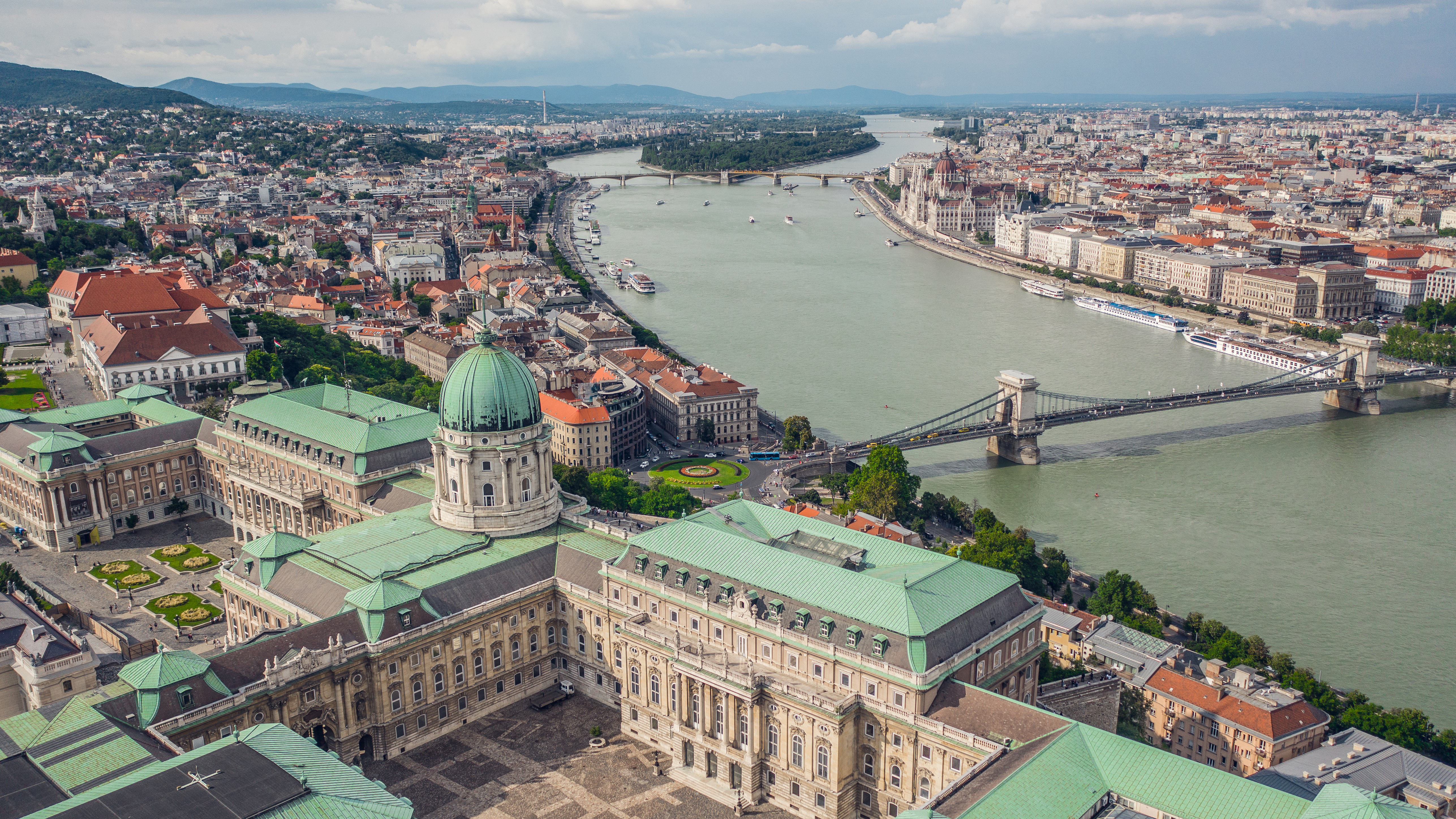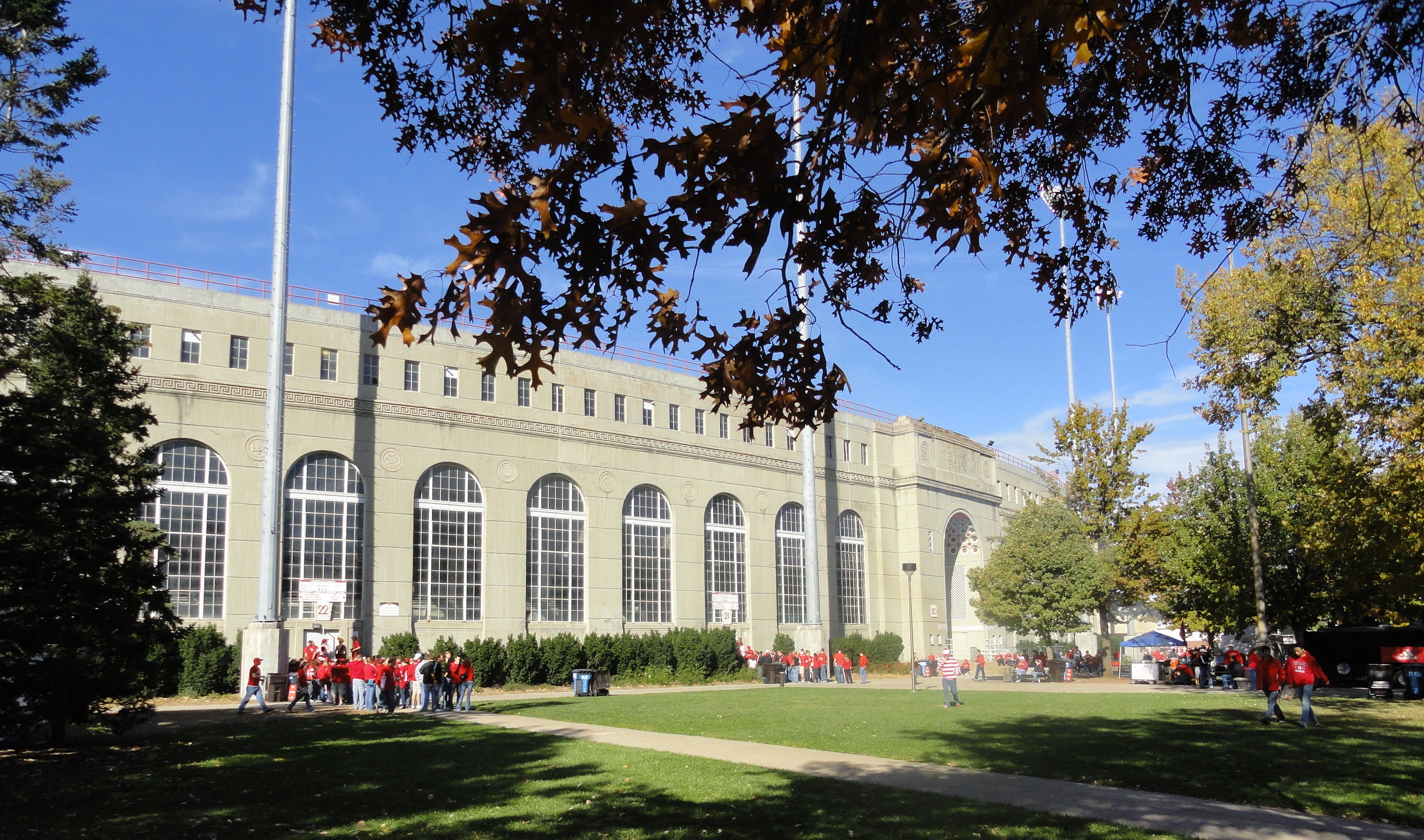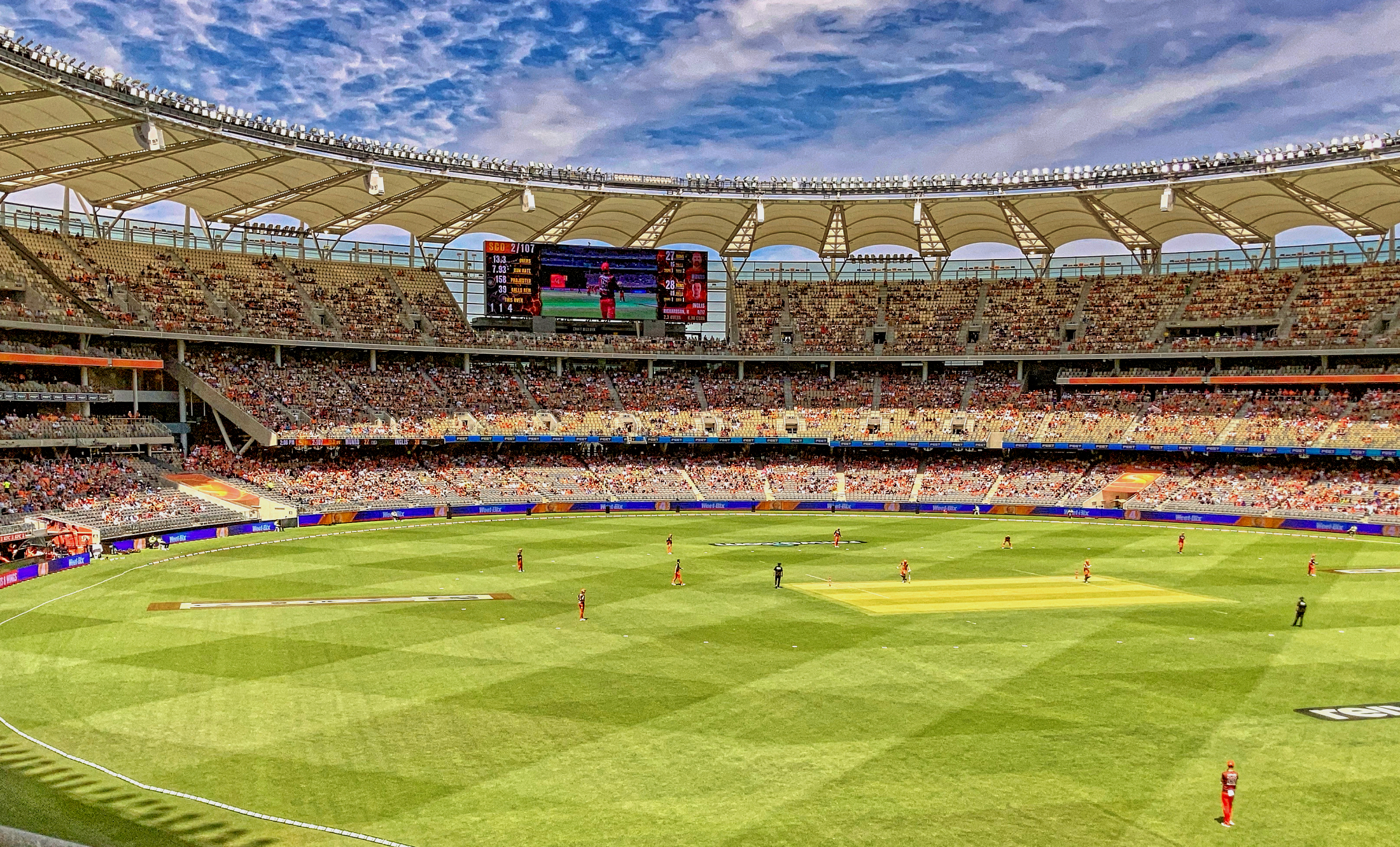28 Forgotten Stadium Grounds Around The World Left Abandoned
Stadiums are built to be timeless—monuments to human passion, competition, and unity. They are designed to hold deafening cheers, unforgettable victories, and moments that shape history. But what happens when the final whistle blows, the gates are locked, and the crowds never return? Across the world, once-great sporting arenas now sit in eerie silence, left to decay as nature and time reclaim them. We’ve expanded our list to 28 forgotten stadiums, each with its own story of rise and fall. These stadiums, now crumbling and overgrown, were once the beating hearts of their cities. They hosted legendary football matches, historic Olympic events, and championship battles that defined generations. Today, their stands are empty, their scoreboards frozen in time, and their fields littered with memories of a past they’ll never relive.
1. Astrodome – Houston, Texas, USA
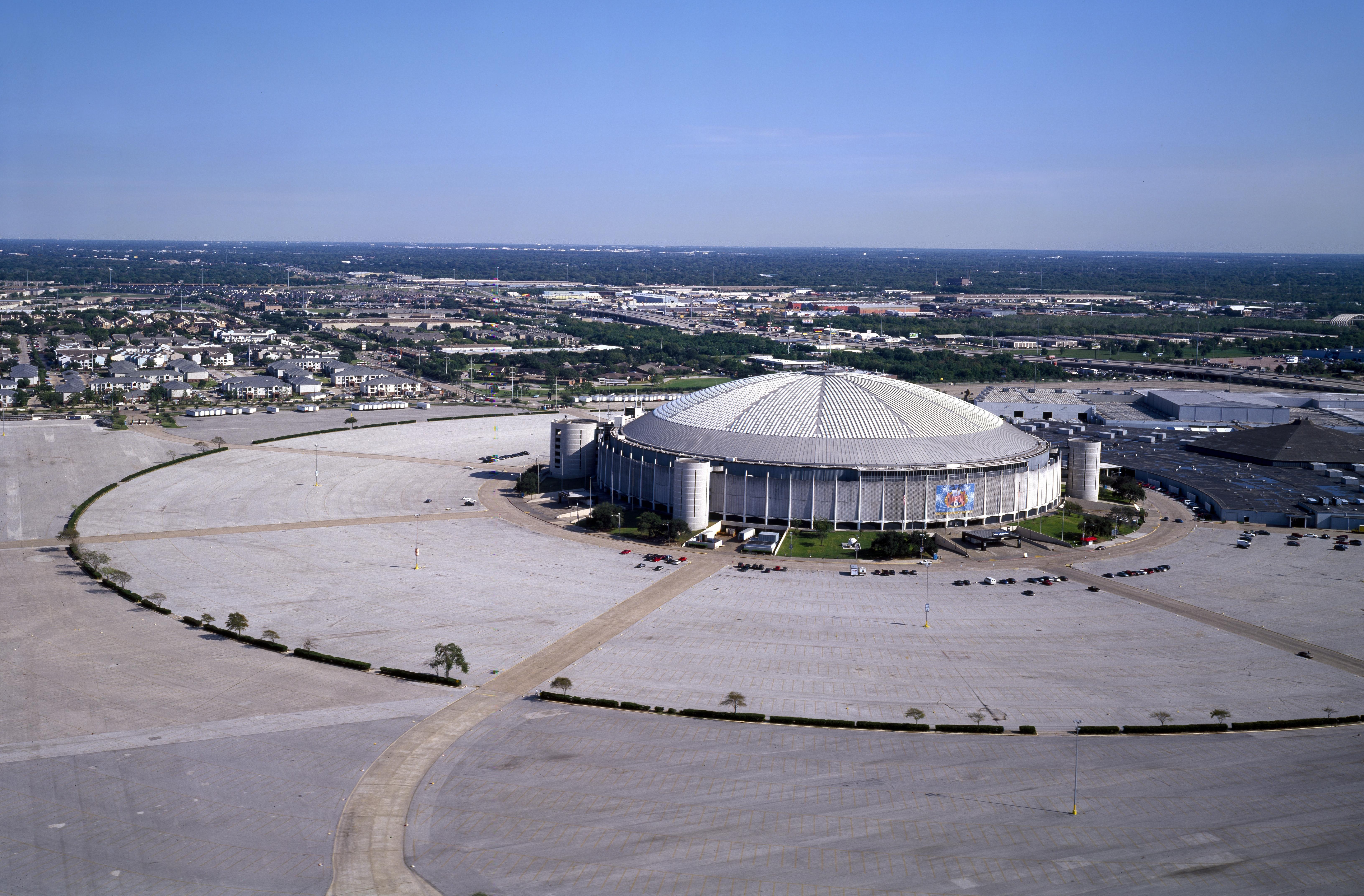
Opened in 1965, the Houston Astrodome was a groundbreaking venue, widely considered the first modern domed stadium in the world. Nicknamed the "Eighth Wonder of the World," it served as the home of the Houston Astros (MLB) and the Houston Oilers (NFL) for decades. The stadium was also used for various other sporting events, concerts, and even served as an emergency shelter during Hurricane Katrina in 2005. However, as newer stadiums were built and the costs of maintaining the Astrodome soared, it was officially closed to the public in 2009. Though it remains structurally intact, the once-revolutionary stadium has fallen into disrepair. Efforts to repurpose or renovate the Astrodome have been discussed over the years, but bureaucratic delays and financial challenges have left the facility in limbo. Today, it is used primarily as a storage facility for the surrounding NRG Park, with its exterior showing signs of decay.
2. Stade des Costières – Nîmes, France
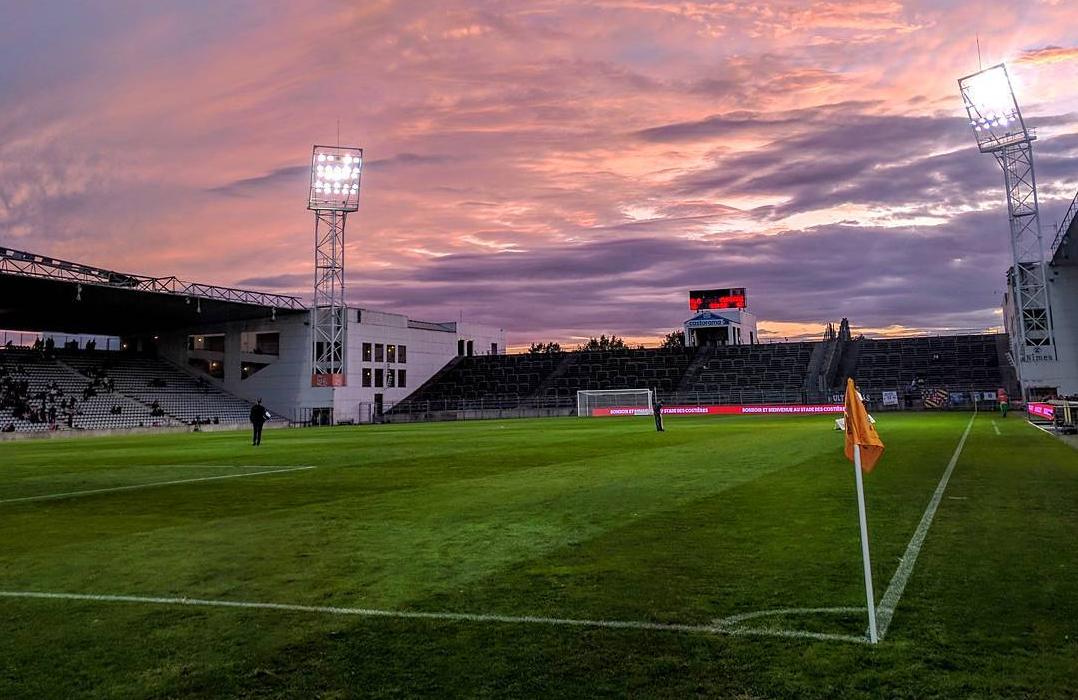
Stade des Costières, located in Nîmes, France, was built in 1989 and served as the home stadium for Nîmes Olympique, a football club with a passionate following. The stadium had a capacity of 18,364 and played host to various football matches over the years, witnessing both triumphs and struggles of the home team. However, the venue was marked for demolition in 2019 as part of a redevelopment project aimed at building a modernized stadium and surrounding commercial infrastructure. Despite these ambitious plans, legal and bureaucratic disputes have stalled any progress, leaving the stadium in a state of abandonment. Since its closure in 2022, nature has started reclaiming the site, with overgrown grass and weeds overtaking the stands and pitch. While the city continues to debate the future of the location, Stade des Costières remains eerily silent, a fading relic of Nîmes' football history.
3. Etchmiadzin Stadium – Vagharshapat, Armenia
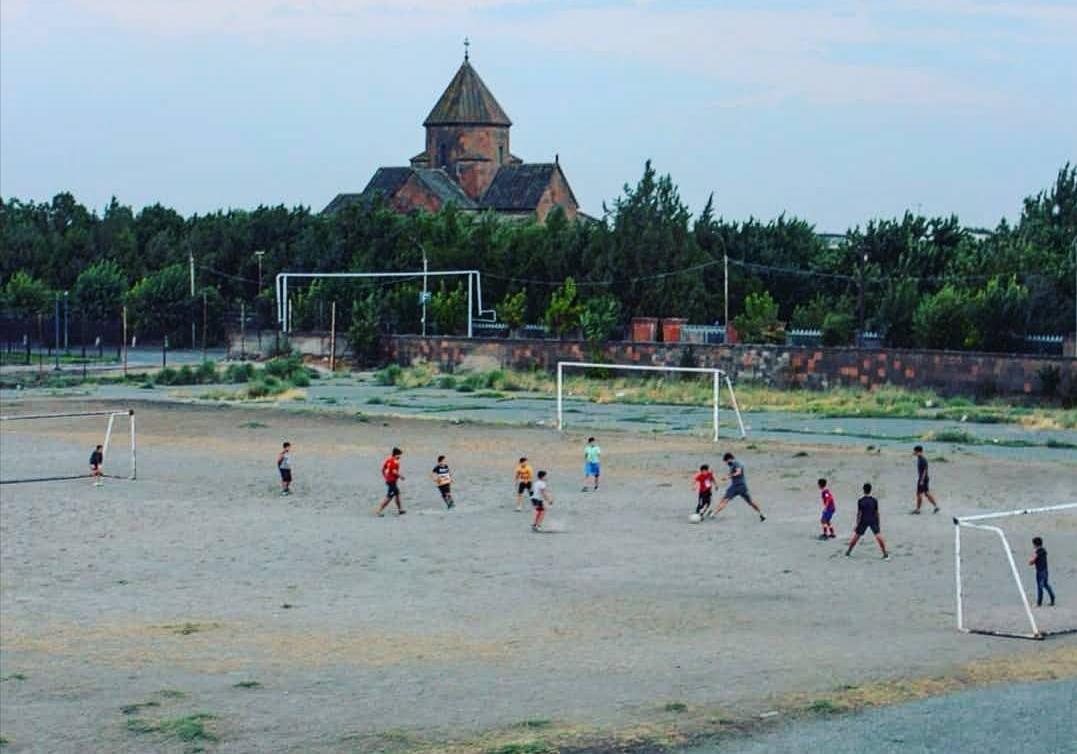
Etchmiadzin Stadium was constructed in 1973 in the city of Vagharshapat, Armenia, and served as the home ground for FC Vagharshapat, a lesser-known Armenian football club. Though relatively small compared to other venues on this list, with a capacity of just 3,000, it held significance within the local community, hosting matches, training sessions, and community events. However, after FC Vagharshapat dissolved in 2005, the stadium was left without a primary tenant, and financial constraints prevented maintenance efforts from continuing. Over the years, the structure has deteriorated significantly, with the seating areas crumbling and vegetation overtaking parts of the field. Today, Etchmiadzin Stadium stands in a ghostly state of neglect, its past role as a gathering place for football enthusiasts now a distant memory. Occasional attempts to revitalize the venue have been proposed, but none have come to fruition, leaving the stadium to slowly succumb to the elements.
4. Casement Park – Belfast, Northern Ireland
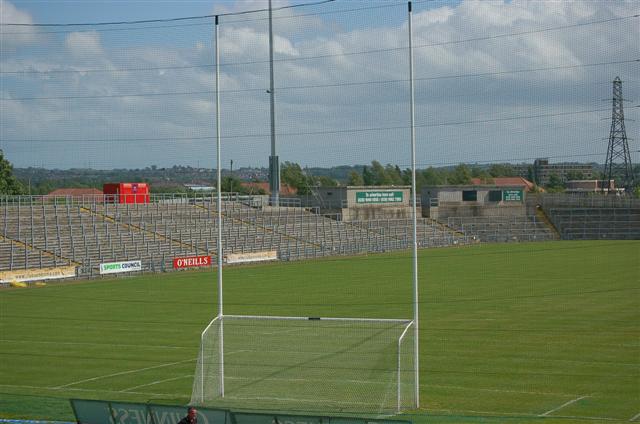
Casement Park, once a premier Gaelic Athletic Association (GAA) stadium in Belfast, Northern Ireland, has been abandoned since 2013. Originally opened in 1953, it became the home of Antrim GAA and frequently hosted major Gaelic football and hurling matches. With a capacity of over 32,000, it was one of the largest stadiums in Ireland dedicated to GAA sports. However, the stadium fell into disuse after a period of neglect and safety concerns, ultimately leading to its closure. In the years following its abandonment, Casement Park has become a symbol of urban decay. The once-vibrant stands are now overrun with weeds, and portions of the stadium have started to crumble due to exposure to the elements. Despite being selected as a venue for the upcoming Euro 2028 football tournament, redevelopment efforts have faced continual setbacks, including funding issues, legal battles, and local opposition. Plans to demolish and rebuild Casement Park into a modern stadium have been repeatedly delayed, leaving it in an eerie state of disrepair. For now, it remains a haunting reminder of its once-prominent status in Irish sports, slowly being reclaimed by nature.
5. Cathkin Park – Glasgow, Scotland
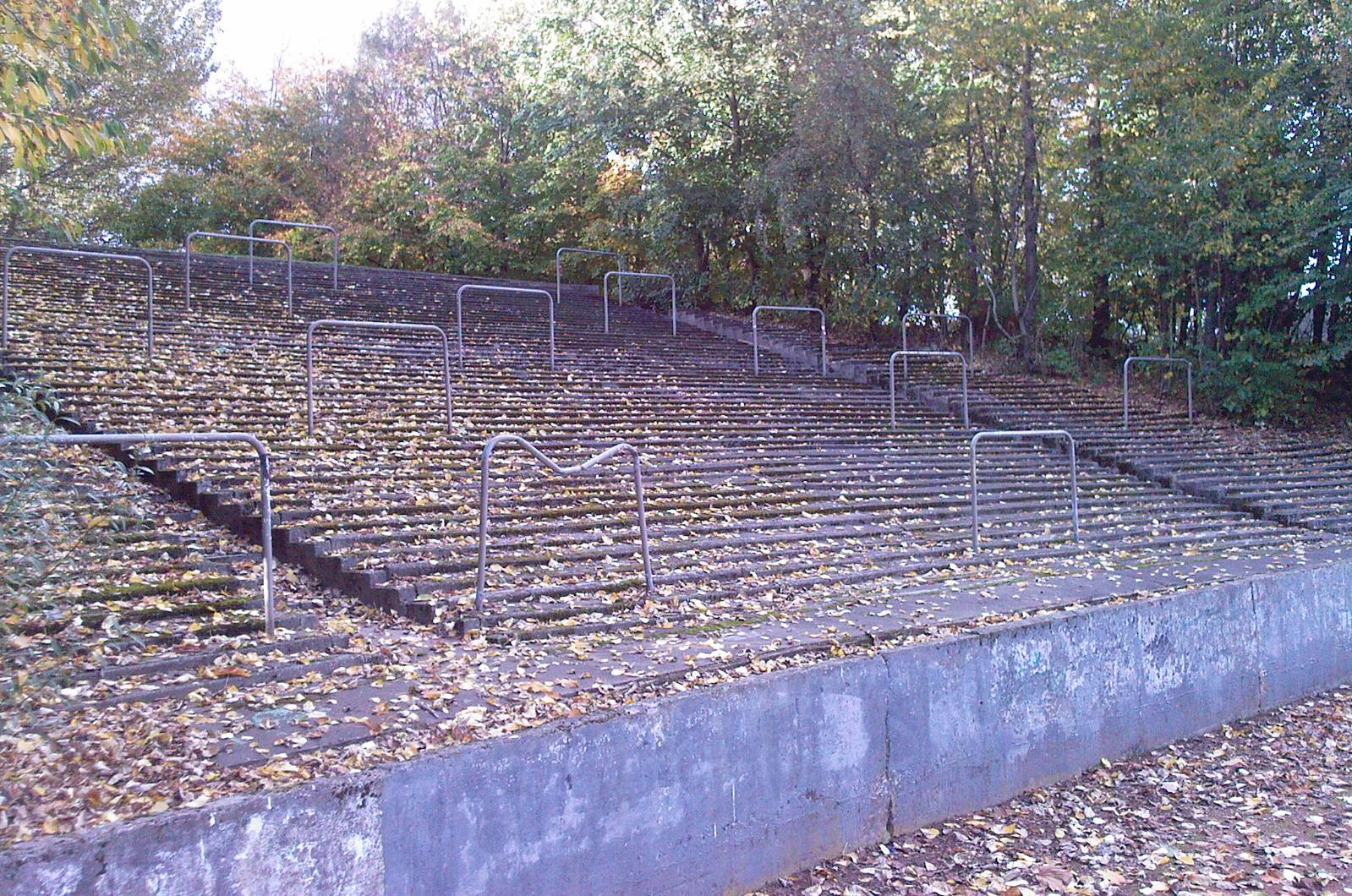
Cathkin Park was once one of the most significant football venues in Scotland, boasting a capacity of 50,000 and serving as the home ground of Third Lanark A.C., a historic Scottish football club. Originally built in 1884 and later redeveloped, the stadium witnessed numerous memorable matches, including local derbies and Scottish Cup ties. However, tragedy struck when Third Lanark A.C. dissolved in 1967 due to financial mismanagement and declining attendance, leaving the stadium without a permanent tenant. Following the club’s collapse, the stadium gradually fell into disrepair. Unlike many other abandoned stadiums that were demolished, Cathkin Park was never completely erased. Large sections of the original terracing still remain today, partially hidden by overgrown grass and trees, giving the site an eerie yet nostalgic feel. The field is now used as a public park and community football ground, but the decaying remnants of the stands serve as a lasting monument to Glasgow’s footballing past. Local historians and preservation groups have expressed interest in maintaining the remaining structures, ensuring that Cathkin Park continues to stand as a unique piece of Scottish sports history.
6. Alonzo Herndon Stadium – Atlanta, Georgia, USA

Alonzo Herndon Stadium was constructed in 1948 on the campus of Morris Brown College in Atlanta, Georgia. It was a multi-purpose venue used for college football, track and field events, and later, as a key venue during the 1996 Summer Olympics. With a capacity of approximately 15,000, the stadium hosted field hockey competitions during the Olympics, bringing global attention to this historic but relatively small venue. Despite its Olympic legacy, the stadium fell into neglect in the early 2000s. In 2003, Morris Brown College faced financial turmoil, which ultimately led to bankruptcy and the loss of many campus properties, including the stadium. Since then, Alonzo Herndon Stadium has remained abandoned, its concrete stands crumbling and the field overtaken by weeds. The once-prominent Olympic venue now stands as a haunting relic of Atlanta’s sporting history. Various redevelopment proposals have been discussed, including plans to restore it as a community sports complex, but financial and legal obstacles have prevented any progress. Today, the stadium remains fenced off and continues to deteriorate, serving as a stark reminder of how quickly a once-vibrant venue can be forgotten.
7. Stadionul Nicolae Dobrin – Pitești, Romania
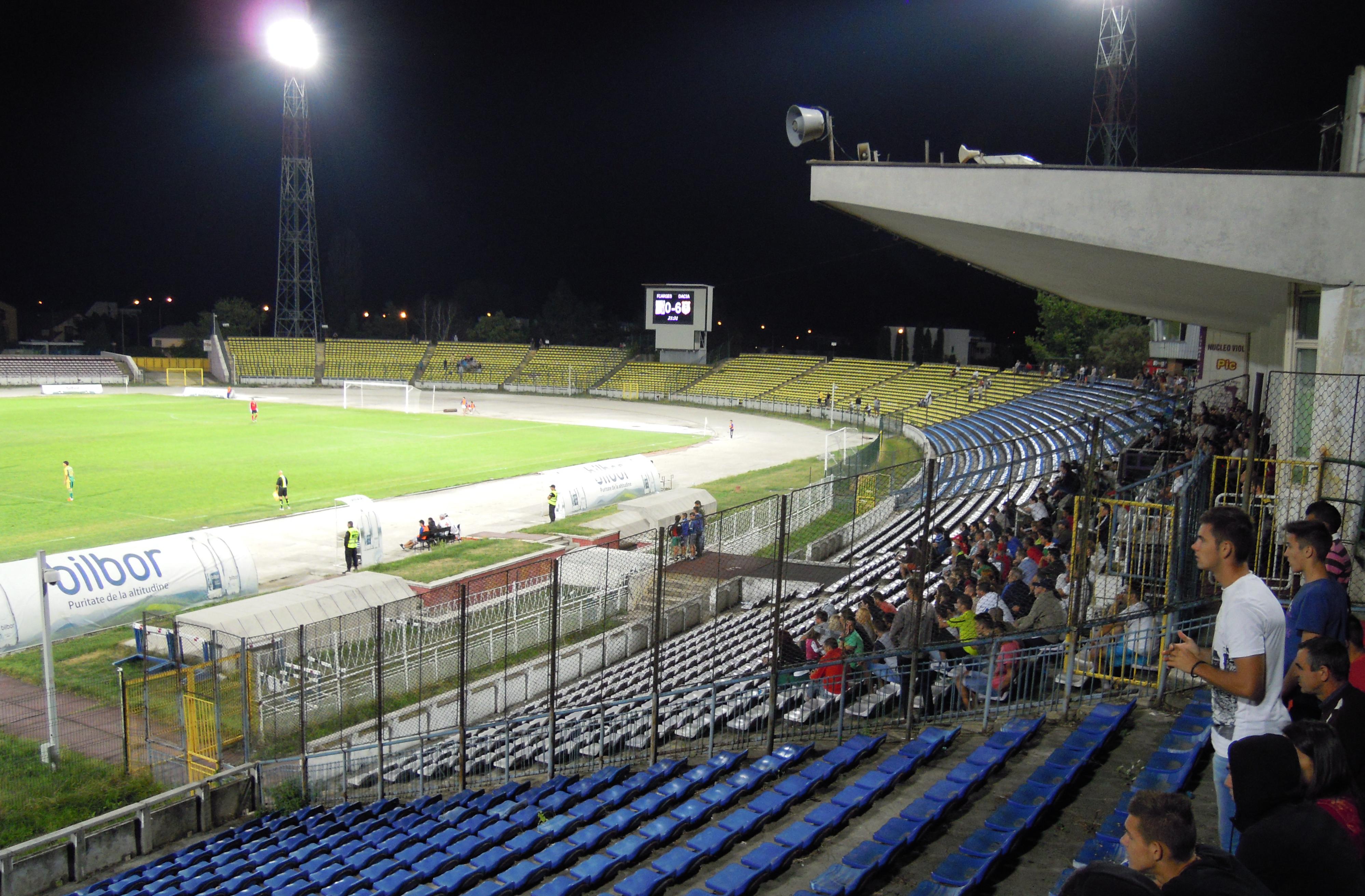
Named after the legendary Romanian footballer Nicolae Dobrin, this stadium in Pitești once hosted Argeș Pitești, one of Romania’s most respected football clubs. Opened in 1964 and expanded over the years, the stadium had a capacity of 15,170 and was a fortress for Argeș Pitești during its prime years. The venue was also used for various domestic league matches, youth tournaments, and even occasional international fixtures. However, the decline of Argeș Pitești, coupled with the aging infrastructure of the stadium, led to its closure in 2023. With no immediate redevelopment plans in place, the stadium now sits abandoned, with rusting goalposts and crumbling stands. The once-pristine pitch has become overgrown, while sections of the seating area have begun to collapse due to years of neglect. Although there has been talk of modernizing or repurposing the venue, financial hurdles and lack of investment have left the stadium in limbo. Local football fans continue to hope that a solution will be found, but for now, Stadionul Nicolae Dobrin remains a deteriorating relic of Romania’s footballing heritage.
8. Olympic Aquatics Stadium – Rio de Janeiro, Brazil

The Olympic Aquatics Stadium in Rio de Janeiro was built specifically for the 2016 Summer Olympics and served as the primary venue for swimming and water polo competitions. With a capacity of 18,000, it hosted world-class athletes and witnessed thrilling moments of Olympic history. However, unlike some of Rio’s other Olympic venues, this stadium was never intended to be a permanent structure. Following the conclusion of the Games, the stadium was supposed to be dismantled and repurposed into smaller community swimming facilities. However, due to mismanagement and financial difficulties, these plans never materialized. Instead, the Olympic Aquatics Stadium has been left to decay, with rusting metal frames, collapsed seating areas, and stagnant water accumulating in what were once pristine competition pools. The venue’s rapid decline has become symbolic of Rio’s struggles with maintaining its Olympic legacy. Today, the stadium is fenced off and inaccessible to the public, standing as a haunting reminder of the billions spent on Olympic infrastructure that was ultimately left to rot.
9. Astana Arena – Nur-Sultan, Kazakhstan
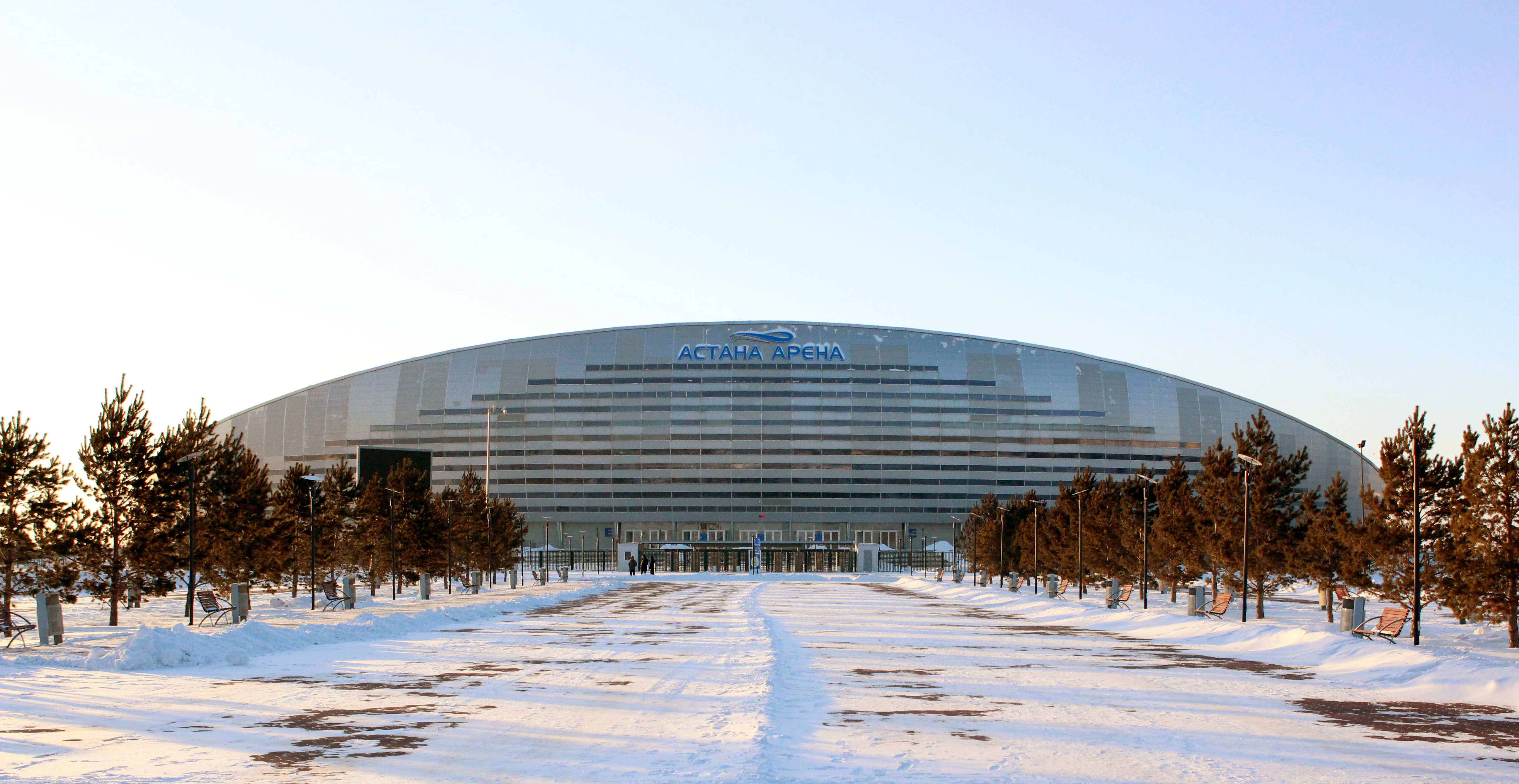
Astana Arena, located in Kazakhstan’s capital city of Nur-Sultan (formerly Astana), was inaugurated in 2009 with a modern retractable roof and a seating capacity of 30,000. Designed to be one of the country’s premier football and event venues, it hosted matches for Kazakhstan’s national football team, local club FC Astana, and other international fixtures. The stadium also held concerts and large-scale events, making it a key part of the city’s sports and entertainment scene. However, despite its relatively young age, Astana Arena has seen declining usage in recent years. The country’s football league struggles with attendance issues, and the stadium’s operating costs have proven to be unsustainable. Many planned events have been canceled, leaving the venue largely underutilized. With no significant maintenance or renovation efforts in place, the structure has started showing early signs of neglect, such as water damage and deteriorating seating areas. While it is not completely abandoned yet, Astana Arena faces an uncertain future, with concerns that it could follow the fate of other underused mega-stadiums that eventually fell into disrepair.
10. Estadio Insular – Las Palmas, Spain
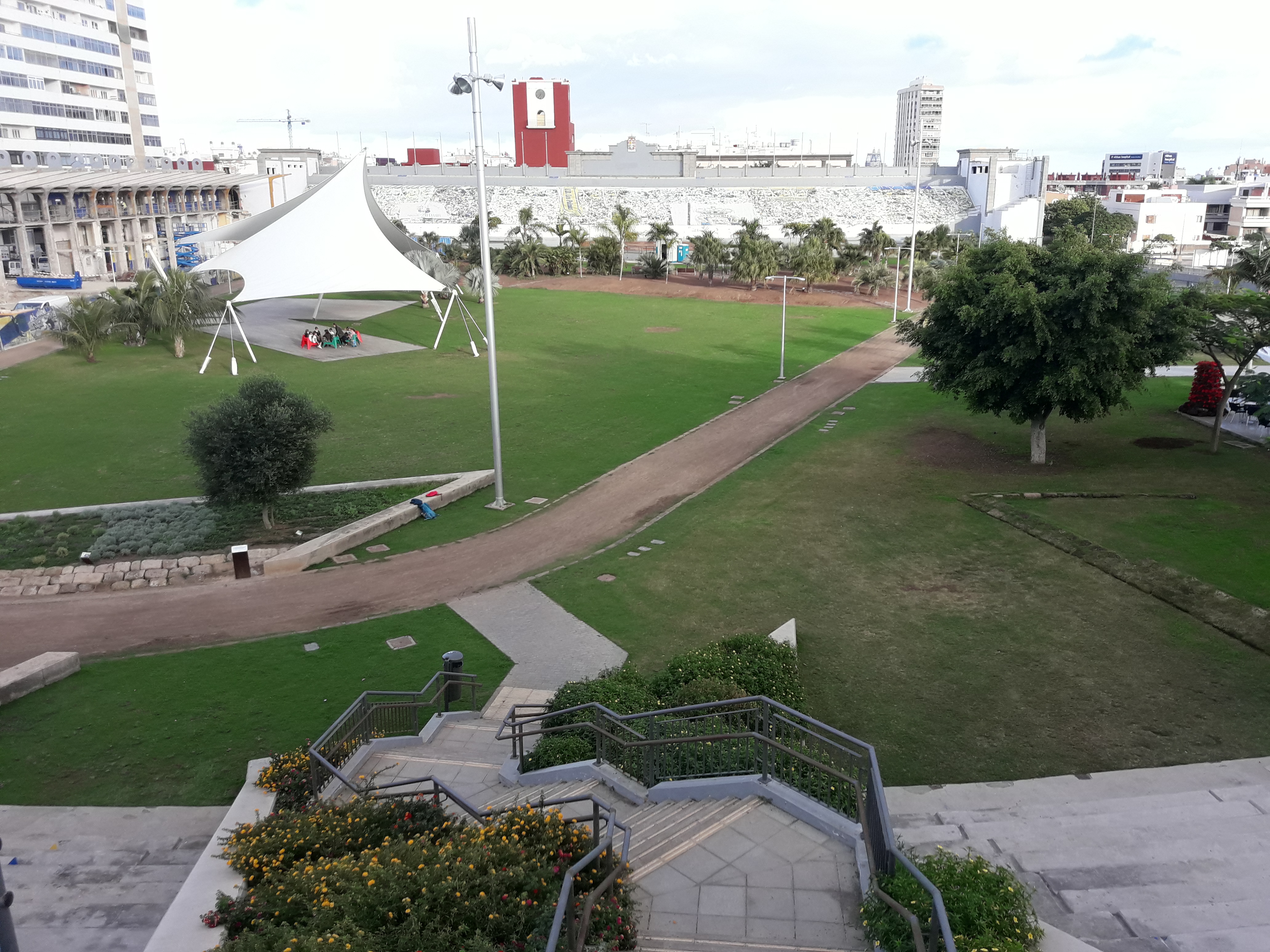
For decades, Estadio Insular was the heart of football in Las Palmas, Spain, serving as the home of UD Las Palmas from its opening in 1944 until its closure in 2003. With a capacity of 22,000, the stadium was renowned for its electric atmosphere, thanks to the passionate fan base that filled the stands. It witnessed many historic matches in La Liga and became an integral part of the city's sporting culture. However, as football infrastructure in Spain evolved, Estadio Insular became outdated, and plans for a modernized venue led to its eventual replacement by the Estadio de Gran Canaria. Following its closure, the stadium sat abandoned for several years, with nature slowly reclaiming parts of the structure. In an attempt to preserve its memory, portions of the stadium were eventually converted into a public park, incorporating parts of the original stands into the design. Despite this transformation, large sections of the site still remain eerily frozen in time, serving as a haunting reminder of the stadium’s former glory. Today, while locals can walk among its remnants, the stadium exists in a strange limbo between preservation and decay.
11. Estadio Lluís Sitjar – Palma, Spain

Estadio Lluís Sitjar, located in Palma de Mallorca, Spain, was home to RCD Mallorca for over five decades, from its inauguration in 1945 until the club’s departure in 1999. Initially built with a capacity of around 18,000, it underwent various renovations over the years to accommodate the growing popularity of football in Spain. The stadium witnessed some of Mallorca’s greatest moments, including their rise to La Liga prominence and European competition appearances. However, by the late 1990s, its infrastructure had become severely outdated, leading to the club’s move to the newer Son Moix Stadium. Following the departure of RCD Mallorca, Estadio Lluís Sitjar quickly fell into a state of abandonment. Over the years, it has been left to rot, with crumbling stands, rusting goalposts, and graffiti-covered walls serving as a stark contrast to the roaring crowds it once held. Despite multiple discussions about demolishing or redeveloping the site, legal disputes and financial constraints have prevented any progress. As of today, the stadium remains in ruins, its empty terraces overtaken by vegetation, standing as a forgotten monument to Mallorca’s footballing past.
12. Strahov Stadium – Prague, Czech Republic
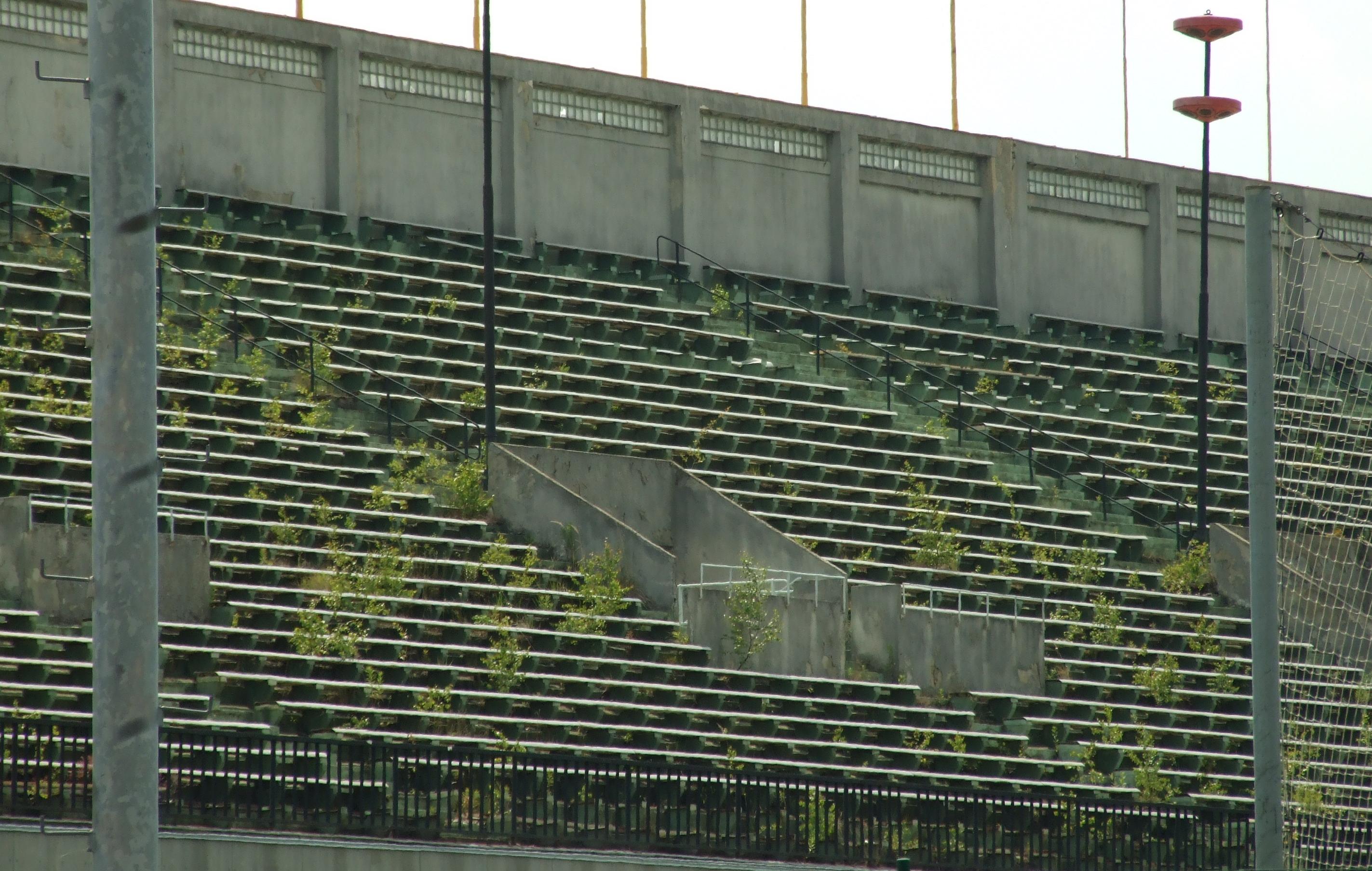
Strahov Stadium, located in Prague, Czech Republic, is one of the largest stadiums ever built, with a staggering capacity of 250,000. Originally constructed in 1926, the stadium was primarily used for synchronized gymnastics events during the communist era, hosting large-scale exhibitions that showcased mass gymnastics performances. It also played a role in Czechoslovakian football history, occasionally serving as a training ground for national teams and hosting large gatherings. Despite its immense size and historical significance, Strahov Stadium was never regularly used for club football, as its dimensions were far too large for standard sporting events. Since 1994, the stadium has largely been left unused, with occasional usage as a concert venue or a training facility for Sparta Prague. However, due to its sheer size and age, maintaining the structure has proven to be financially unviable. Large sections of the stadium are now in a dilapidated state, with cracked concrete and overgrown grass creeping through the terraces. While there have been discussions about redeveloping the area, no definitive plans have been set in motion. Today, Strahov Stadium stands as a colossal relic of a bygone era, its vast empty terraces serving as a stark reminder of Prague’s sporting history.
13. Stadion Za Lužánkami – Brno, Czech Republic

Stadion Za Lužánkami in Brno, Czech Republic, was once the largest football stadium in Czechoslovakia, boasting a capacity of 50,000. It was a fortress for FC Zbrojovka Brno, hosting some of the most memorable football matches in the country’s history. Opened in 1953, the stadium enjoyed decades of use as one of Czechoslovakia’s premier football venues. However, as modern stadium regulations changed and infrastructure requirements increased, Za Lužánkami failed to keep up, and by the early 2000s, it had fallen into disrepair. In 2001, the stadium was officially abandoned, and nature began reclaiming the once-vibrant stands. Trees and weeds sprouted through the cracked concrete, while the pitch became barely recognizable under layers of overgrowth. Despite several fan-led efforts to revive the stadium, including attempts by former players to raise awareness for its restoration, financial and bureaucratic obstacles have prevented any progress. While some parts of the stadium are occasionally used for informal football matches and cultural events, its overall condition continues to worsen. To this day, Za Lužánkami remains a haunting symbol of Brno’s footballing heritage, standing as one of Europe’s largest abandoned sports venues.
14. Stadion Wrocław – Wrocław, Poland

Built in 1935, Stadion Wrocław (formerly known as Olympic Stadium Wrocław) was one of Poland’s key sporting venues before and after World War II. Initially constructed to host multi-purpose events, it had a capacity of 40,000 and played host to domestic football matches, athletics competitions, and even speedway racing. Over the years, the stadium saw a decline in major event hosting as newer, more modern venues were constructed across the country. By the 2000s, its infrastructure had deteriorated significantly, leading to its closure in 2007. Since then, the stadium has been left largely abandoned, with no clear plans for renovation or redevelopment. The once-impressive grandstands now sit empty, crumbling under the weight of time and neglect. Trees and vines have overtaken sections of the structure, making parts of the stadium look like an ancient ruin. Though some community efforts have been made to preserve parts of the venue, Stadion Wrocław remains in a state of limbo, with its future uncertain.
15. Stadion Miejski – Chorzów, Poland

Stadion Miejski in Chorzów, Poland, was one of the country’s largest stadiums, with a capacity of 47,202. Opened in 1935, it became a key venue for Polish football, hosting numerous domestic league matches, international fixtures, and national cup finals. It was also a site for athletics events, concerts, and other large gatherings. The stadium held a special place in Polish sports history, serving as a stage for countless legendary performances over the decades. However, as newer stadiums were constructed and sporting infrastructure improved, Stadion Miejski gradually fell out of favor. By 2009, the stadium was closed, and its future became uncertain. Despite its historical significance, redevelopment efforts have been stalled due to financial and logistical challenges. Today, the stadium remains in a state of abandonment, with its once-packed stands now empty and decaying. Weeds and moss have begun creeping over the old concrete terraces, while sections of the seating areas have collapsed due to years of neglect. While the potential for restoration still exists, no definitive plans have been put in place, leaving Stadion Miejski as yet another forgotten monument of Poland’s sporting past.
16. Stadionul Municipal – Drobeta-Turnu Severin, Romania
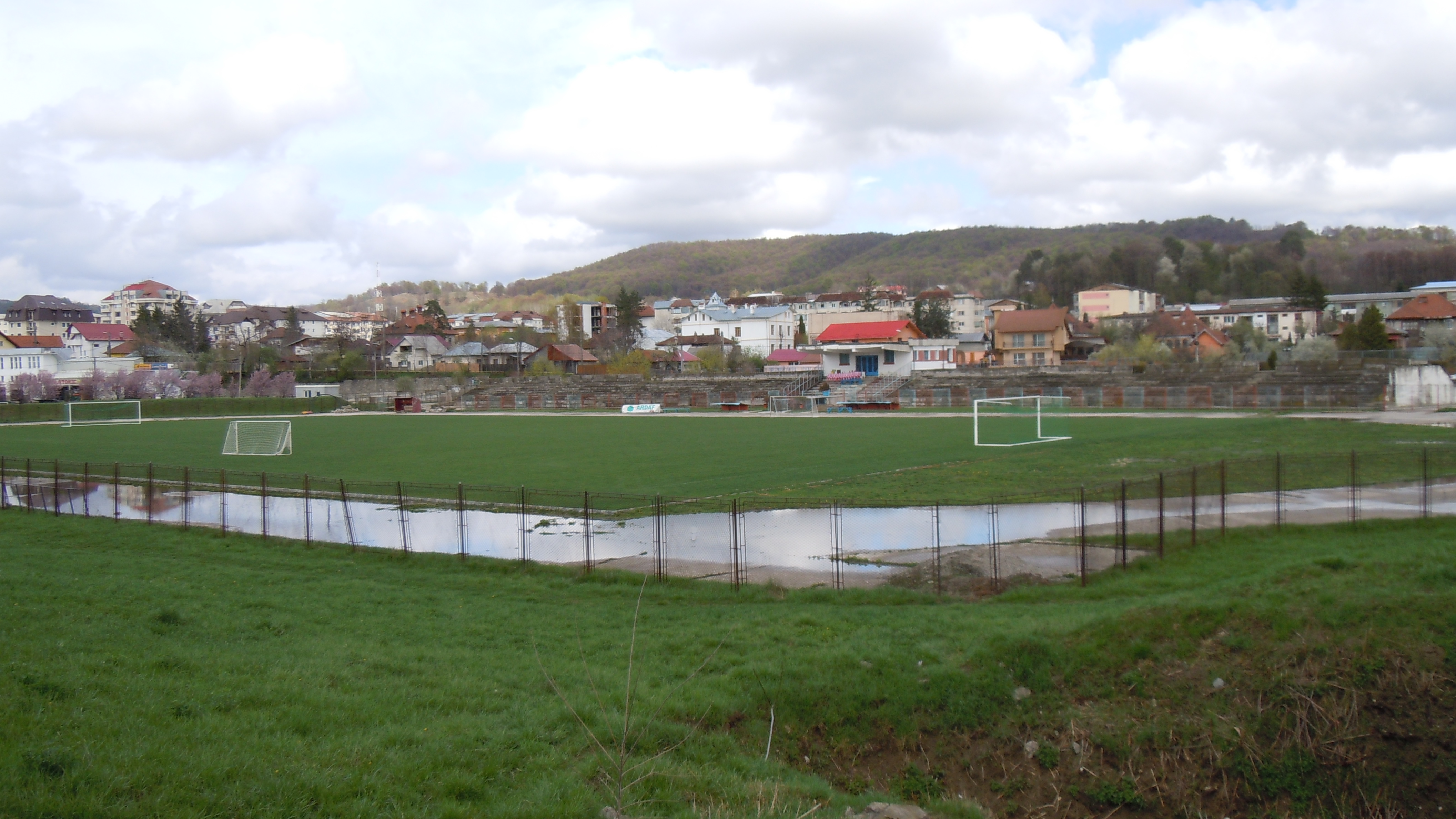
Stadionul Municipal in Drobeta-Turnu Severin, Romania, was once a thriving venue for local football, boasting a capacity of 20,054. Built to serve the needs of multiple clubs and sports events, the stadium was home to various teams, including FC Drobeta and FC U Craiova 1948, which played some of their home games there. The stadium was known for its passionate crowds, especially when major Romanian league matches were held, drawing fans from across the region. However, in the years leading up to its closure in 2019, the stadium began to experience neglect. The infrastructure became outdated, and maintenance efforts dwindled due to financial constraints. With local teams struggling to attract large crowds and secure funding, the stadium eventually fell into disuse. Today, it remains abandoned, with its once-lush playing field overgrown and the stands crumbling. No official redevelopment plans have been announced, and the stadium’s future remains uncertain. Despite this, local fans and preservationists have advocated for its restoration, hoping to see the stadium revived as a community sports venue rather than left to decay.
17. Circus Maximus – Rome, Italy
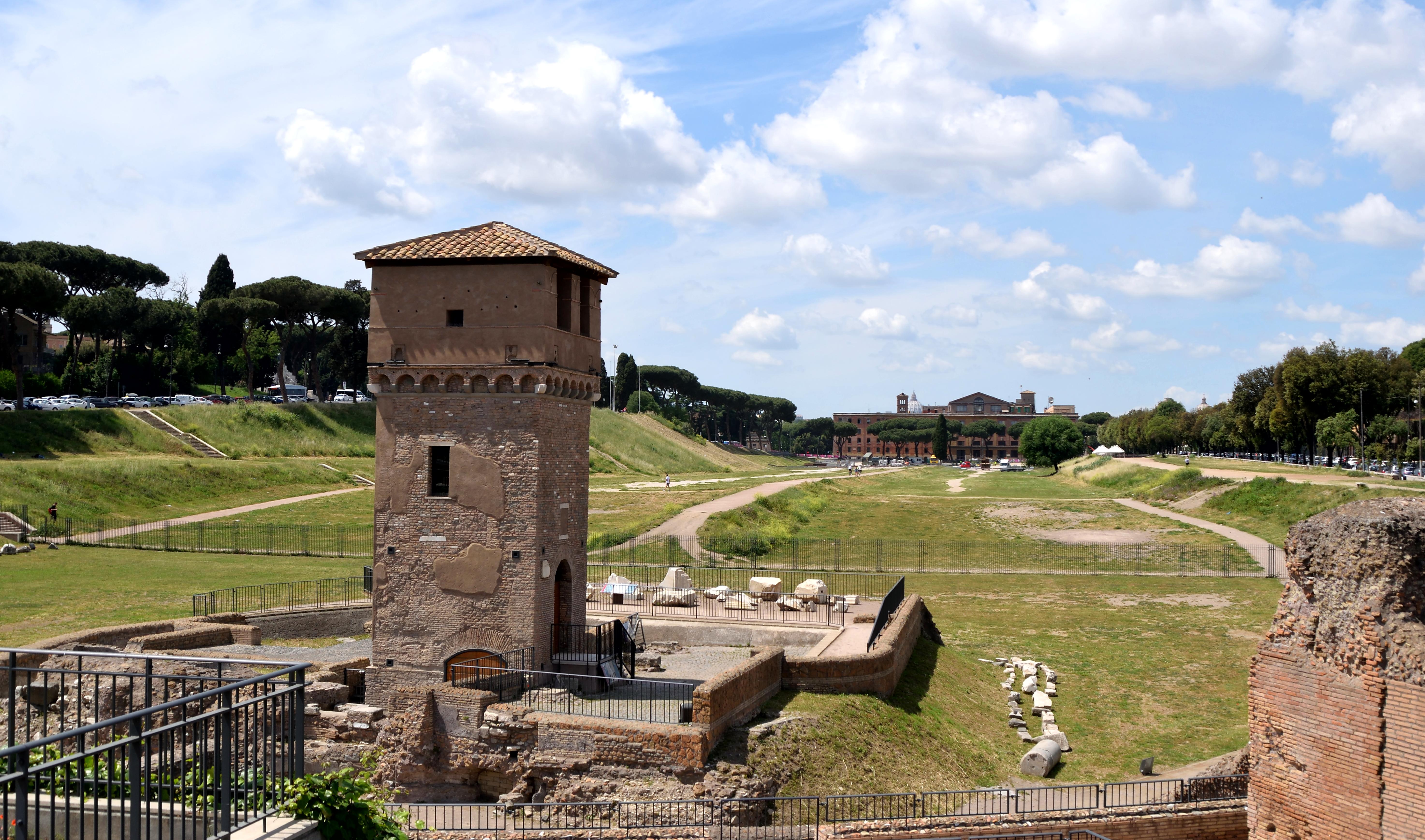
The Circus Maximus, located in the heart of Rome, is one of the oldest and most historically significant stadiums in the world. Originally built in the 6th century BCE, it was primarily used for chariot races, gladiator battles, and grand public spectacles, making it one of the most important entertainment venues of the Roman Empire. At its peak, the stadium could hold an estimated 150,000 spectators, making it one of the largest stadiums ever built in human history. Despite its immense historical significance, the Circus Maximus fell into disuse after the decline of the Roman Empire. By the early 600s, the structure was largely abandoned, with many of its materials repurposed for other construction projects throughout the city. Over the centuries, erosion and urban development further altered the site, leaving little of the original stadium intact. However, the area remains a major tourist attraction and serves as a public park, with remnants of the ancient track still visible today. While the structure itself is no longer a functional stadium, its history and cultural impact continue to make it one of the most fascinating abandoned sporting venues in the world.
18. Yuri Gagarin Stadium – Varna, Bulgaria

Yuri Gagarin Stadium in Varna, Bulgaria, was once a premier venue for Bulgarian football, boasting a capacity of 35,000. Named after the Soviet cosmonaut Yuri Gagarin, the first man in space, the stadium was a symbol of sports and progress in Bulgaria during the mid-20th century. It served as the home ground for PFC Spartak Varna, hosting numerous domestic league matches as well as international fixtures. Despite its historical significance, the stadium was closed in 2007 due to deteriorating conditions. The aging infrastructure failed to meet modern safety standards, and plans for renovations or a new stadium were never fully realized. Over time, the neglected structure became a victim of the elements, with overgrown weeds, rusting goalposts, and cracked concrete stands. Although discussions have emerged about potentially redeveloping the site, no concrete action has been taken. Today, Yuri Gagarin Stadium stands as an eerie monument to Bulgaria’s sporting past, a once-thriving arena now fading into obscurity.
19. Kings Park Soccer Stadium – Durban, South Africa

Kings Park Soccer Stadium, located in Durban, South Africa, was once an essential venue for South African football, with a seating capacity of 35,000. It served as the home of Manning Rangers, one of the country's most historic clubs, and hosted numerous league matches, cup competitions, and international friendlies. The stadium was a key part of Durban's sports scene and played a role in the development of football in South Africa during the late 20th century. However, following the dissolution of Manning Rangers in 2006, the stadium was left without a primary tenant. With little financial incentive to maintain it, Kings Park Soccer Stadium was gradually abandoned. The lack of upkeep resulted in rapid decay—grass overtook the field, the seating areas fell into disrepair, and the once-loud stands became eerily silent. While nearby stadiums, such as Moses Mabhida Stadium, have received investment and modernization, Kings Park has been largely forgotten. Efforts to repurpose or renovate the venue have stalled, and as of today, it remains unused, a deteriorating relic of Durban's footballing past.
20. Robert F. Kennedy Memorial Stadium – Washington, D.C., USA
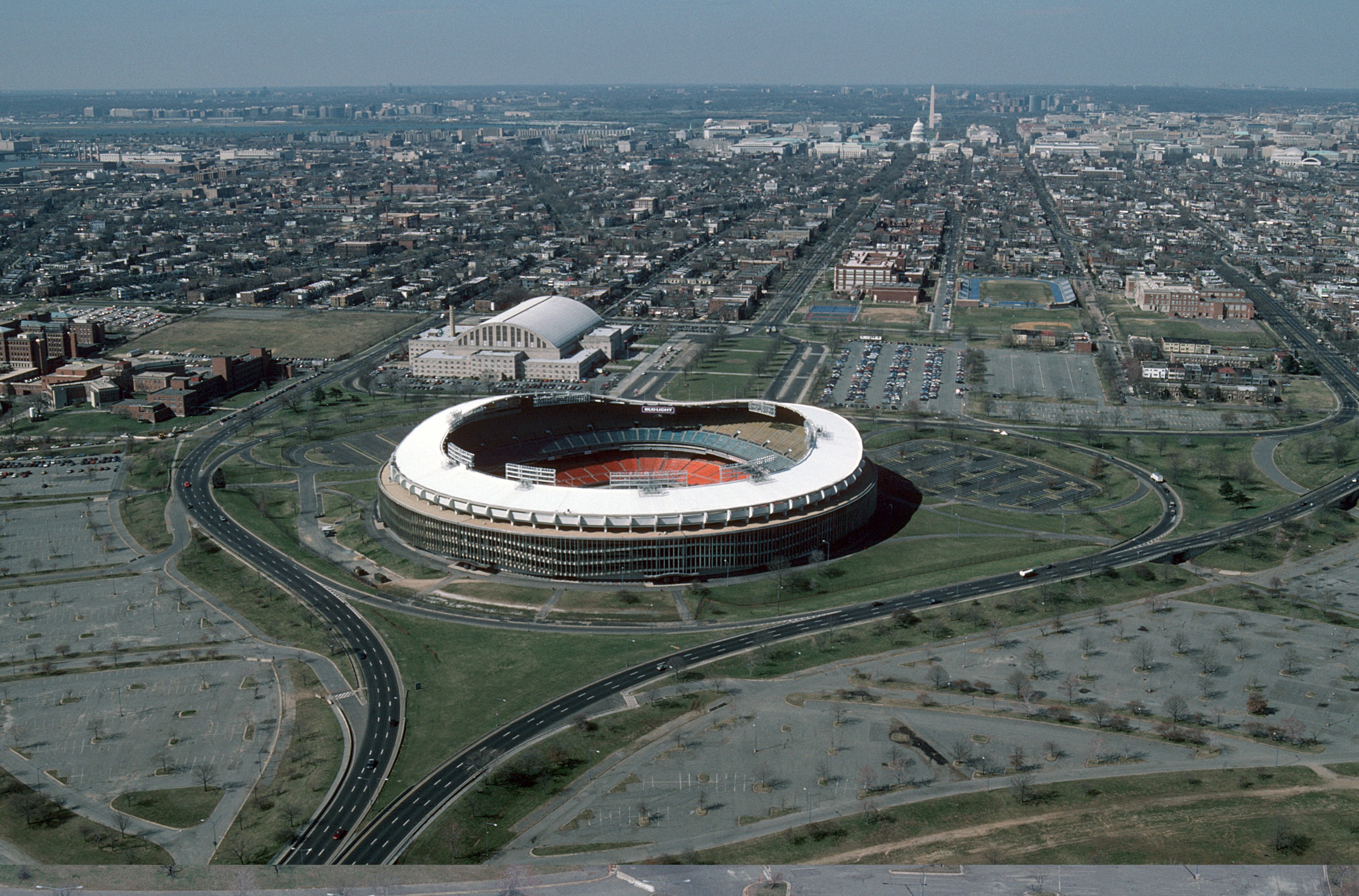
Robert F. Kennedy Memorial Stadium (RFK Stadium) was a multi-purpose sports venue that served as one of Washington, D.C.’s most important stadiums for decades. Opened in 1961 with a seating capacity of over 56,000, the stadium was home to several major teams, including the Washington Redskins (NFL), D.C. United (MLS), and the Washington Nationals (MLB). It also hosted numerous concerts, political events, and international soccer matches, making it a cultural landmark in the U.S. capital. However, as newer, more modern stadiums were built in Washington, RFK Stadium gradually lost its prominence. By the 2010s, it had become an outdated venue, with structural issues and maintenance costs piling up. It was officially closed in 2019, and although there have been discussions about repurposing the site, no firm plans have been put in place. The stadium now sits vacant, its once-iconic grandstands rusting away. Local officials have debated whether to demolish or renovate the venue, but for now, it remains a ghostly reminder of its once-glorious past.
21. Stadion Maksimir – Zagreb, Croatia
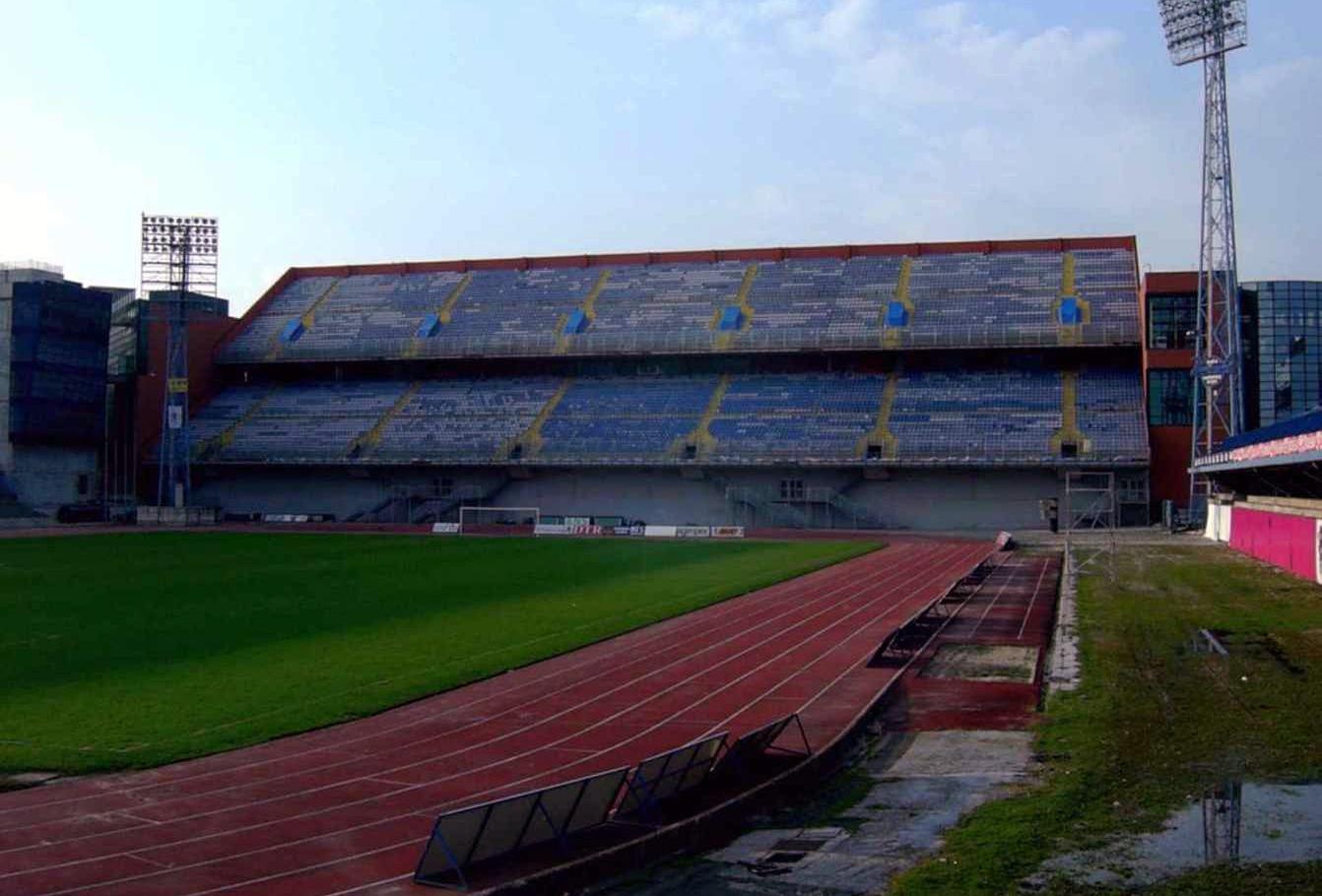
Stadion Maksimir, located in Zagreb, Croatia, is one of the most famous stadiums in the country and has long served as the home of Dinamo Zagreb and the Croatian national football team. Opened in 1912, the stadium has undergone several renovations, eventually expanding to a capacity of 25,912. Over the years, it has hosted countless domestic league matches, European club competitions, and international fixtures, including games featuring Croatia's national team. Despite its historical importance, Stadion Maksimir has fallen into disrepair in recent years. Structural problems, outdated facilities, and a lack of investment have made it increasingly difficult to maintain. While there have been proposals to demolish and rebuild the stadium, political and financial disputes have delayed progress. Cracked concrete, exposed wiring, and crumbling stands now characterize what was once a proud footballing venue. While Dinamo Zagreb continues to play there, the stadium's deteriorating condition raises questions about how much longer it will remain in use. Unless a comprehensive renovation project is undertaken, Maksimir Stadium may soon join the ranks of Europe’s most neglected sports venues.
22. Stadio Flaminio – Rome, Italy
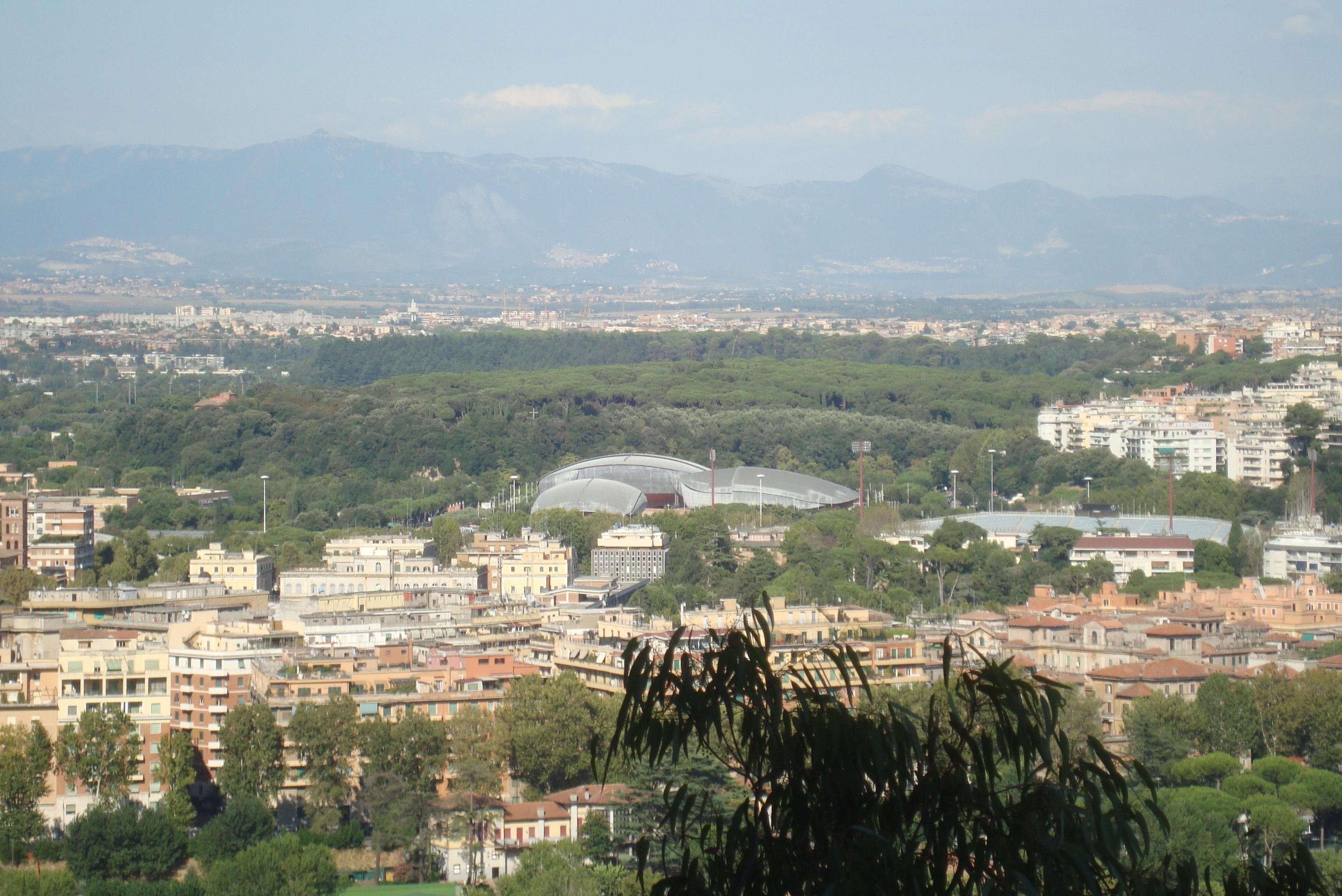
Built in 1959 and designed by renowned Italian architect Pier Luigi Nervi, Stadio Flaminio was intended to be a multi-purpose sports venue in the heart of Rome. With a capacity of 30,000, it served as the home ground for Italy's national rugby team for decades and also hosted football matches, concerts, and other large-scale events. Over the years, it witnessed historic Six Nations Rugby Championship matches and was once considered a vital part of Rome’s sporting infrastructure. However, Stadio Flaminio’s decline began in the early 2000s as newer, more modern venues like Stadio Olimpico took precedence. By 2011, safety concerns, lack of maintenance, and decreasing attendance led to its closure. Since then, the stadium has remained in a state of abandonment, with its once-lively stands now overgrown with weeds and its facilities in a dire state of disrepair. Various proposals have been made to renovate and repurpose the venue, including turning it into a training facility or a new home for SS Lazio, but none have come to fruition. The Italian government has debated investing in its restoration, but as of today, Stadio Flaminio remains an empty shell, its decaying concrete structure a stark contrast to its former glory.
23. Estadio Nacional – Lisbon, Portugal
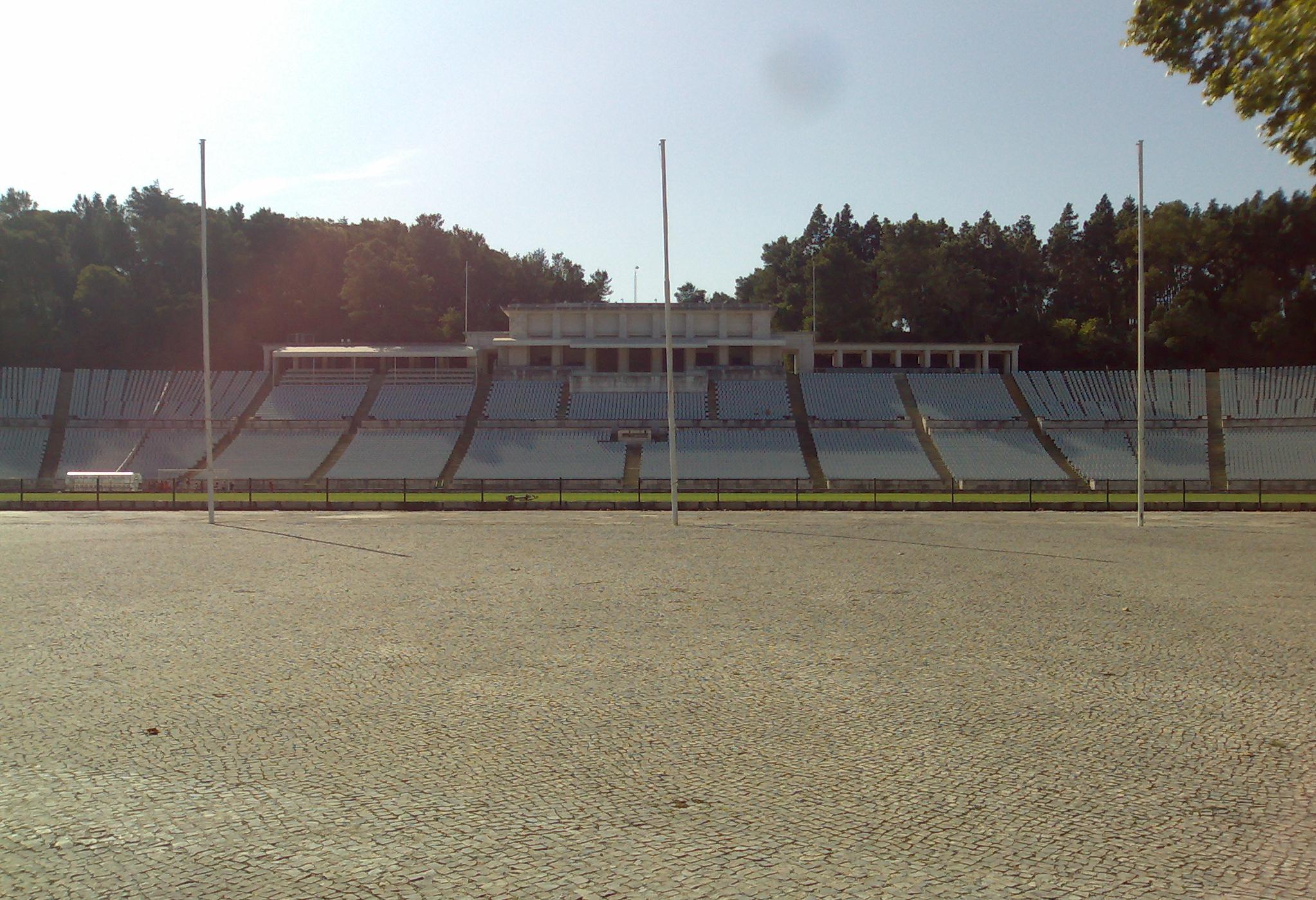
Opened in 1944, Estadio Nacional, located in Lisbon, Portugal, is one of the country's most historic sports venues. With a capacity of 37,593, the stadium has hosted numerous Portuguese Cup finals and was once the home ground for the Portuguese national football team. Its most famous moment came in 1967 when it hosted the European Cup final between Celtic and Inter Milan, where Celtic became the first British team to win the prestigious tournament. Despite its rich history, Estadio Nacional has gradually faded from prominence. The Portuguese national team moved to the modern Estádio da Luz and Estádio José Alvalade for most of their games, while club teams also prefer newer venues. Though it remains structurally intact, it is rarely used for major events, with only occasional lower-tier football matches or non-sporting events taking place. Many parts of the stadium have fallen into neglect, with cracked concrete seating areas and rusting goalposts standing as reminders of its glorious past. While it is still technically operational, it is considered functionally obsolete and remains largely forgotten by modern football audiences.
24. Stadium 974 – Doha, Qatar
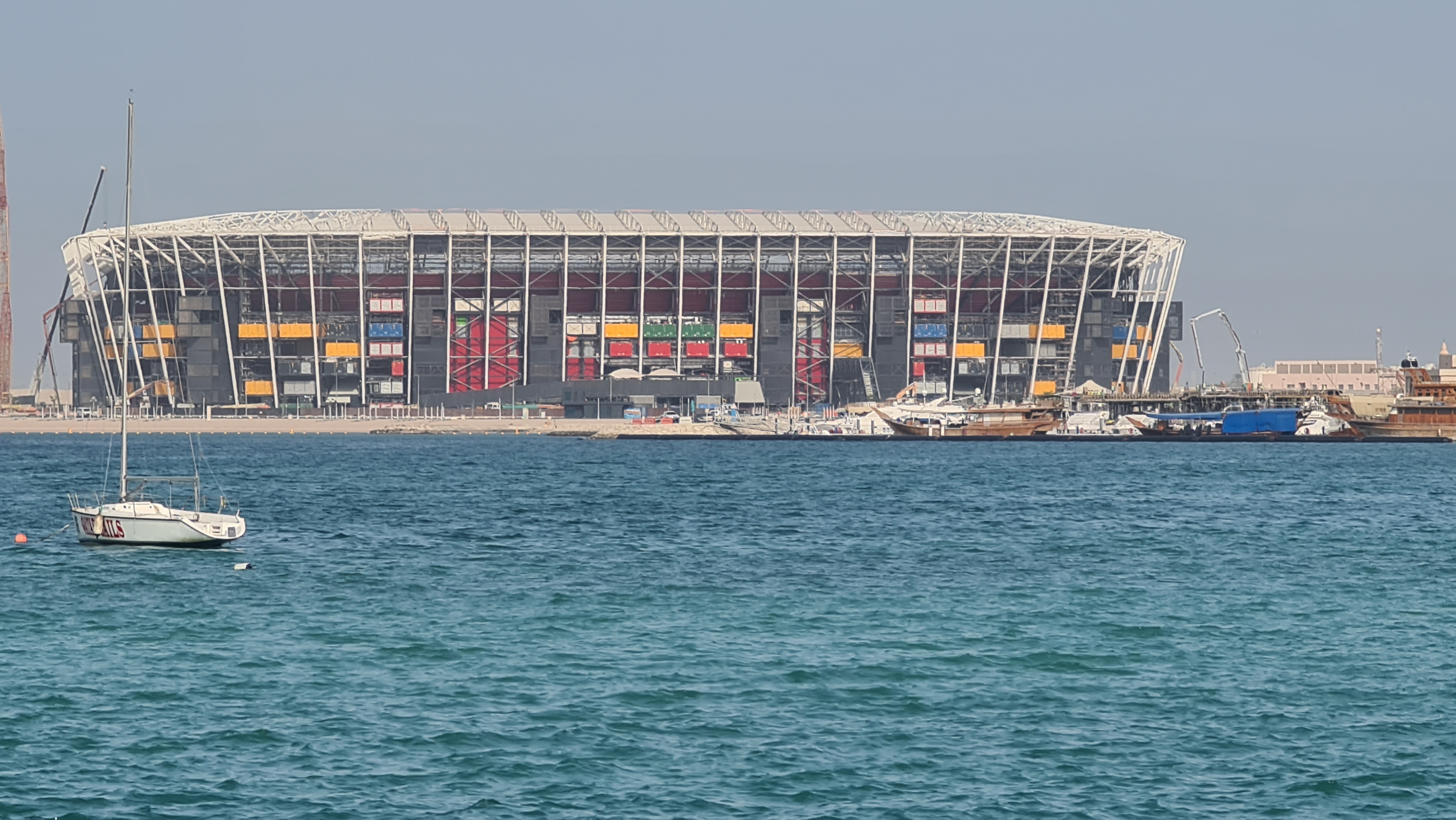
Stadium 974, located in Doha, Qatar, is one of the most unique stadiums ever constructed. Designed specifically for the 2022 FIFA World Cup, it was built using 974 repurposed shipping containers, giving it an innovative and sustainable design. The stadium had a seating capacity of 44,089 and was initially intended to be a temporary structure, with plans to dismantle it after the tournament and relocate it to another location or repurpose its materials for other projects. However, as of February 2025, the stadium remains standing in its original location, completely unused. While FIFA and Qatari officials initially promoted Stadium 974 as an example of sustainable architecture, its uncertain future raises questions about the feasibility of temporary stadiums for major tournaments. The containers, while durable, require regular maintenance to prevent deterioration from Doha’s harsh climate. With no official announcements about its dismantling or future use, Stadium 974 remains in limbo, standing as a stark reminder of the massive investments Qatar made in its World Cup infrastructure. While some proposals have suggested repurposing it for other sporting events or cultural activities, no firm decisions have been made.
25. Estadio Nacional de Brasília Mané Garrincha – Brasília, Brazil
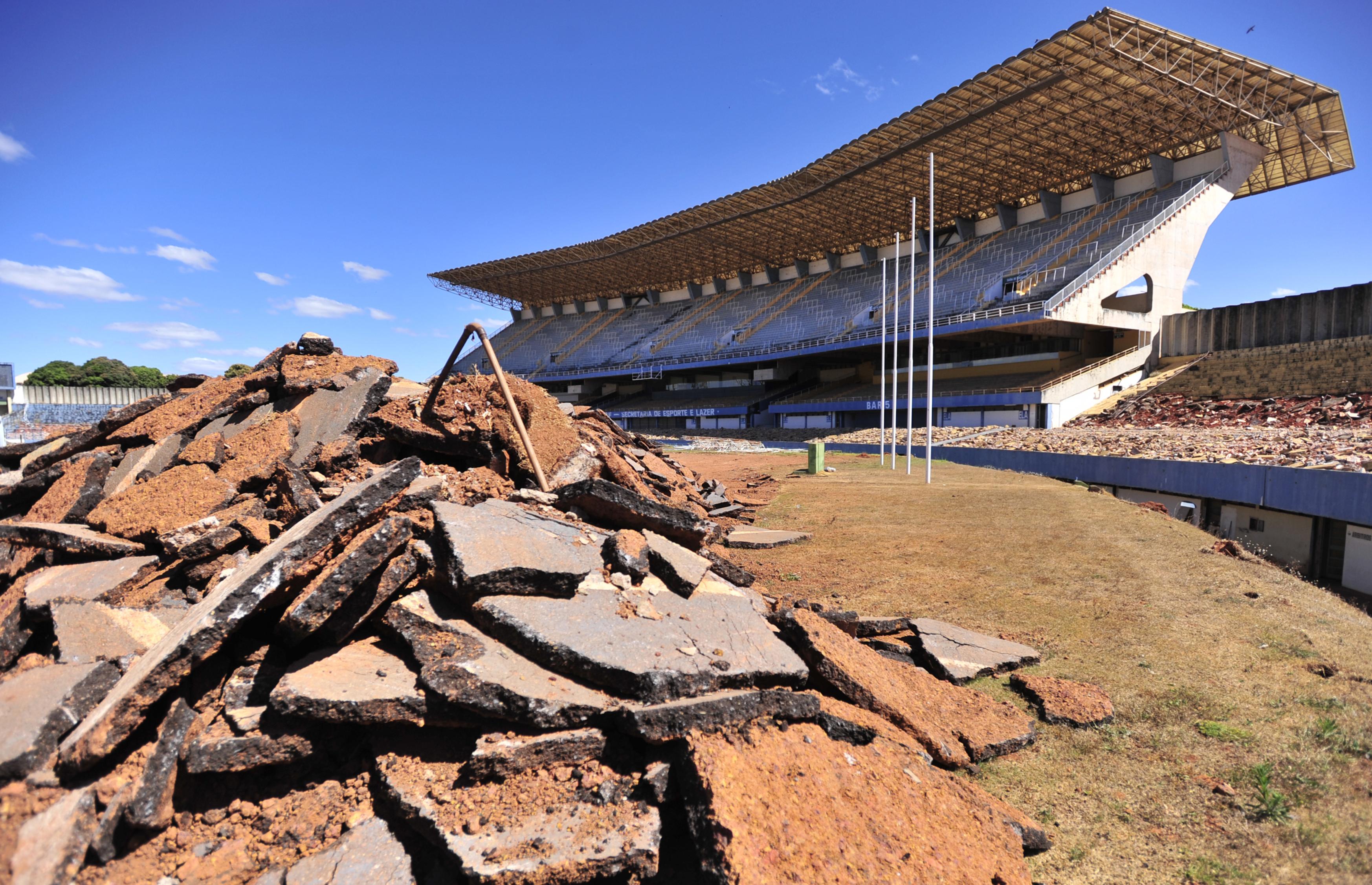
Estadio Nacional de Brasília Mané Garrincha, located in Brazil's capital, is a massive stadium with a seating capacity of approximately 72,788. Originally built in 1974, the stadium underwent extensive renovations for the 2014 FIFA World Cup, with billions of dollars spent to transform it into a world-class venue. It hosted several World Cup matches, including high-profile games featuring Brazil’s national team, and was expected to become a major sports and entertainment venue for years to come. However, since the World Cup ended, the stadium has struggled to find regular use. Brasília lacks a major football team that can consistently fill the stands, and the high costs of maintenance have made it difficult to keep the stadium fully operational. Reports have surfaced of the venue being used for government parking and storage, highlighting the extent of its underutilization. Critics have pointed to Estadio Nacional as a prime example of the financial mismanagement surrounding Brazil’s World Cup preparations, as billions were spent on infrastructure that has since been neglected. Today, despite being one of the most expensive stadiums ever built in Brazil, it remains largely unused, with its grandeur slowly fading into irrelevance.
26. Estadio Vicente Calderón – Madrid, Spain
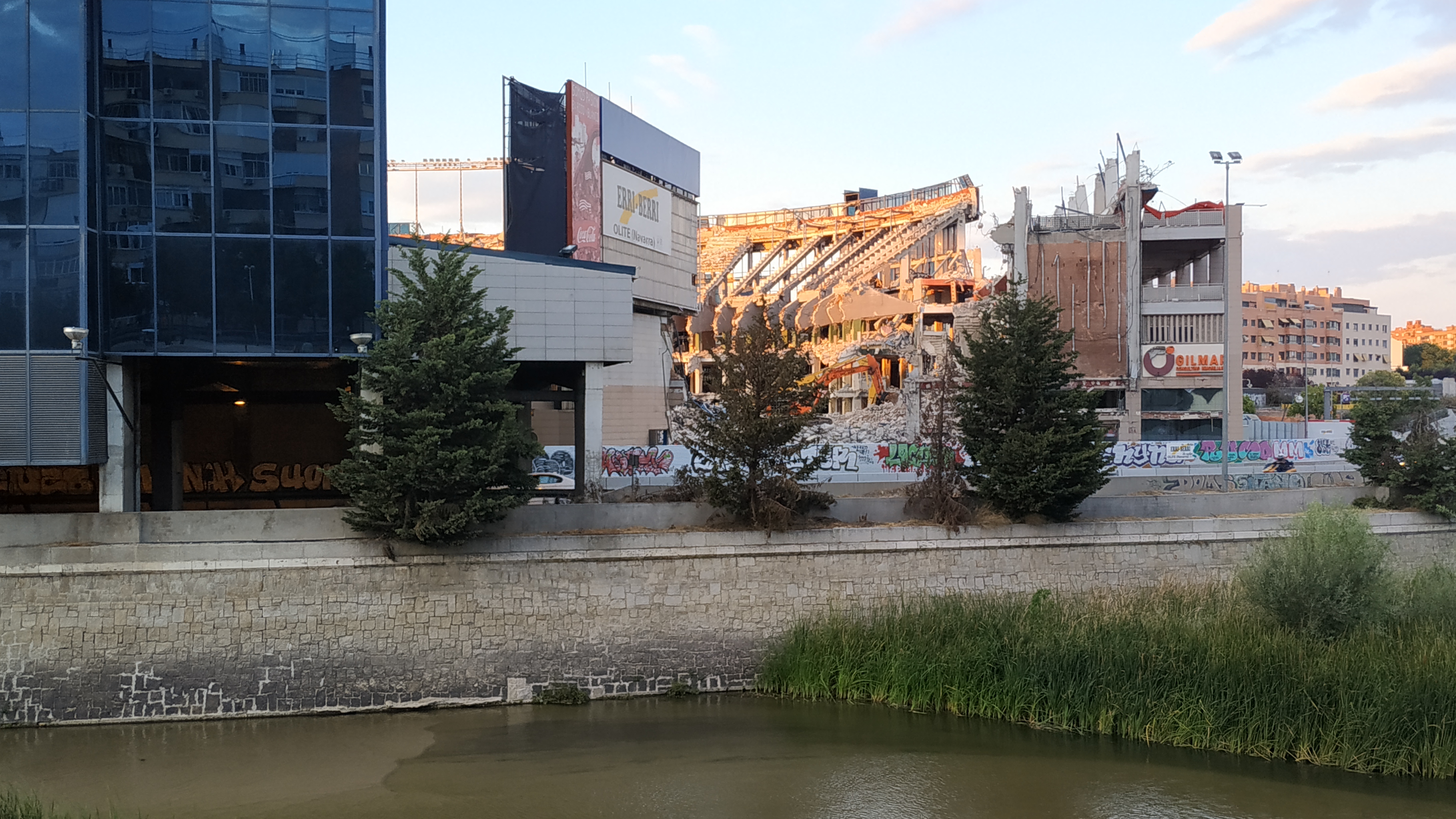
Estadio Vicente Calderón was one of Spain’s most iconic football stadiums, serving as the home of Atlético Madrid from 1966 until its closure in 2017. With a capacity of 54,907, the stadium was known for its passionate fan atmosphere, hosting countless historic La Liga matches, European fixtures, and Copa del Rey finals. The stadium’s unique design included the M-30 highway running underneath its main stand, making it one of the most distinctive football venues in the world. Despite its rich history, Atlético Madrid announced plans to relocate to the modern Wanda Metropolitano stadium, leaving Vicente Calderón without a purpose. Initially, plans were made for its demolition to make way for new residential and commercial developments, but the process has faced repeated delays. As of now, while large portions of the stadium have been dismantled, sections of the structure still stand in a deteriorated state. The field is overgrown, seats are either missing or vandalized, and the remaining portions of the stands have fallen into disrepair. The abandoned stadium has become an eerie sight in Madrid, a fading monument to Atlético’s storied past. While redevelopment plans are still in motion, bureaucracy and financial hurdles have prevented a complete transformation of the site, leaving Vicente Calderón in a state of limbo.
27. Estadio Nacional Julio Martínez Prádanos – Santiago, Chile
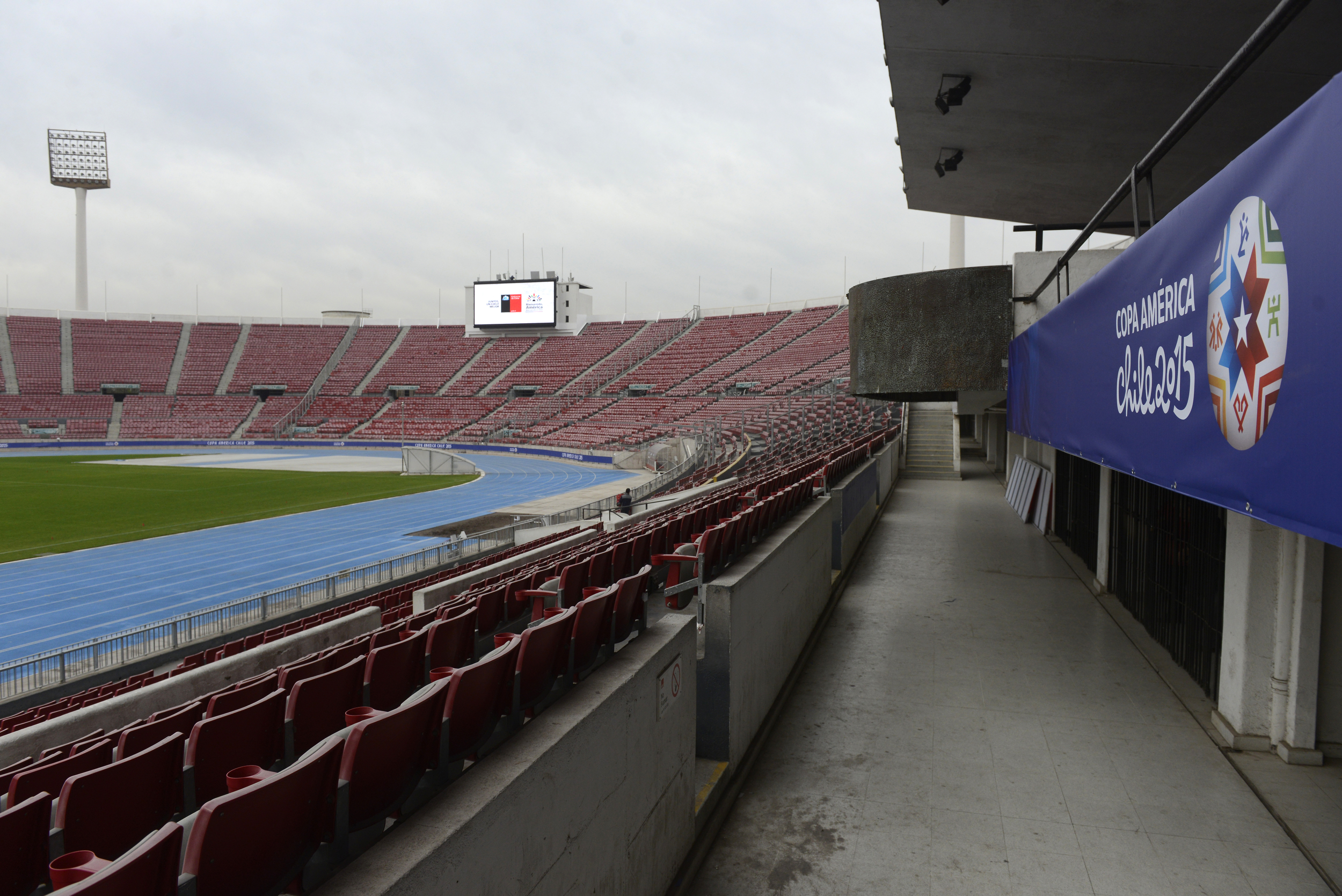
Estadio Nacional Julio Martínez Prádanos, located in Santiago, Chile, is the country’s largest stadium, with a capacity of 48,665. Opened in 1938, it has hosted some of the most significant events in Chilean sports history, including matches during the 1962 FIFA World Cup and countless Copa América games. The stadium has also been a central venue for major concerts, political rallies, and national celebrations. However, despite its importance, the stadium has suffered from neglect in recent years. While it is still occasionally used for sporting events, including Chilean national team matches and club competitions, large portions of the facility remain in poor condition. The aging infrastructure, coupled with a lack of consistent maintenance, has led to the deterioration of certain sections, including seating areas, dressing rooms, and concourses. Some areas have been closed off due to safety concerns, and planned renovations have been repeatedly delayed due to financial and logistical challenges.
28. Estadio Monumental David Arellano – Santiago, Chile
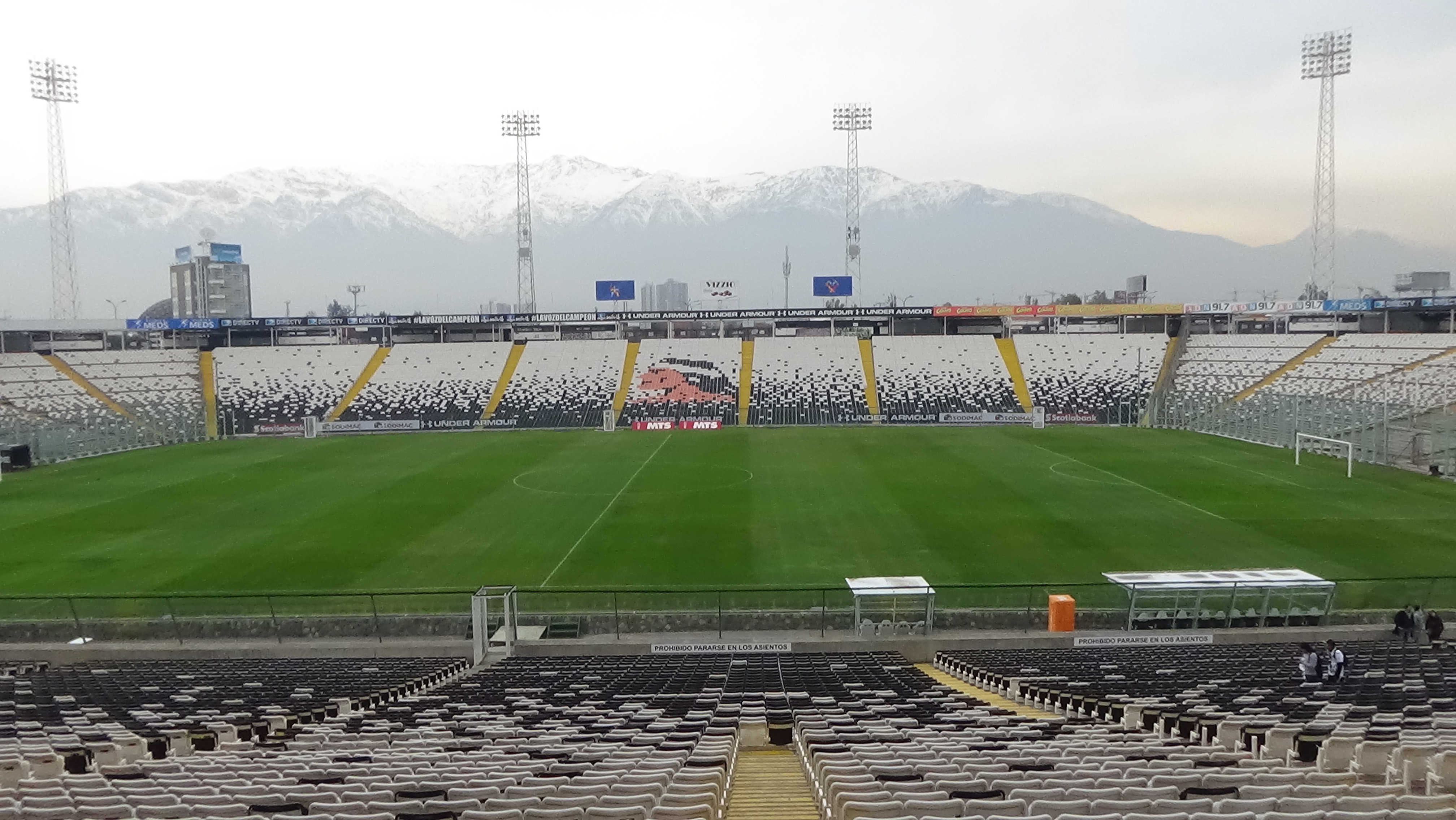
Estadio Monumental David Arellano is the home of Colo-Colo, Chile’s most successful football club. Located in Santiago, the stadium has a capacity of 47,000 and has long been known for its passionate fan base and electrifying atmosphere. Since its inauguration in 1975, it has hosted some of the biggest matches in Chilean football, including domestic league finals, Copa Libertadores fixtures, and even international friendlies. However, despite its legendary status, Estadio Monumental has faced significant challenges in recent years. Financial difficulties, a lack of proper upkeep, and structural concerns have left parts of the stadium in a state of disrepair. Certain sections, particularly in the upper stands and surrounding areas, have been closed off due to safety concerns. Cracks in the concrete, rusting metal fixtures, and outdated facilities have contributed to an overall decline in the stadium’s condition.
The Haunting Legacy of Abandoned Stadiums
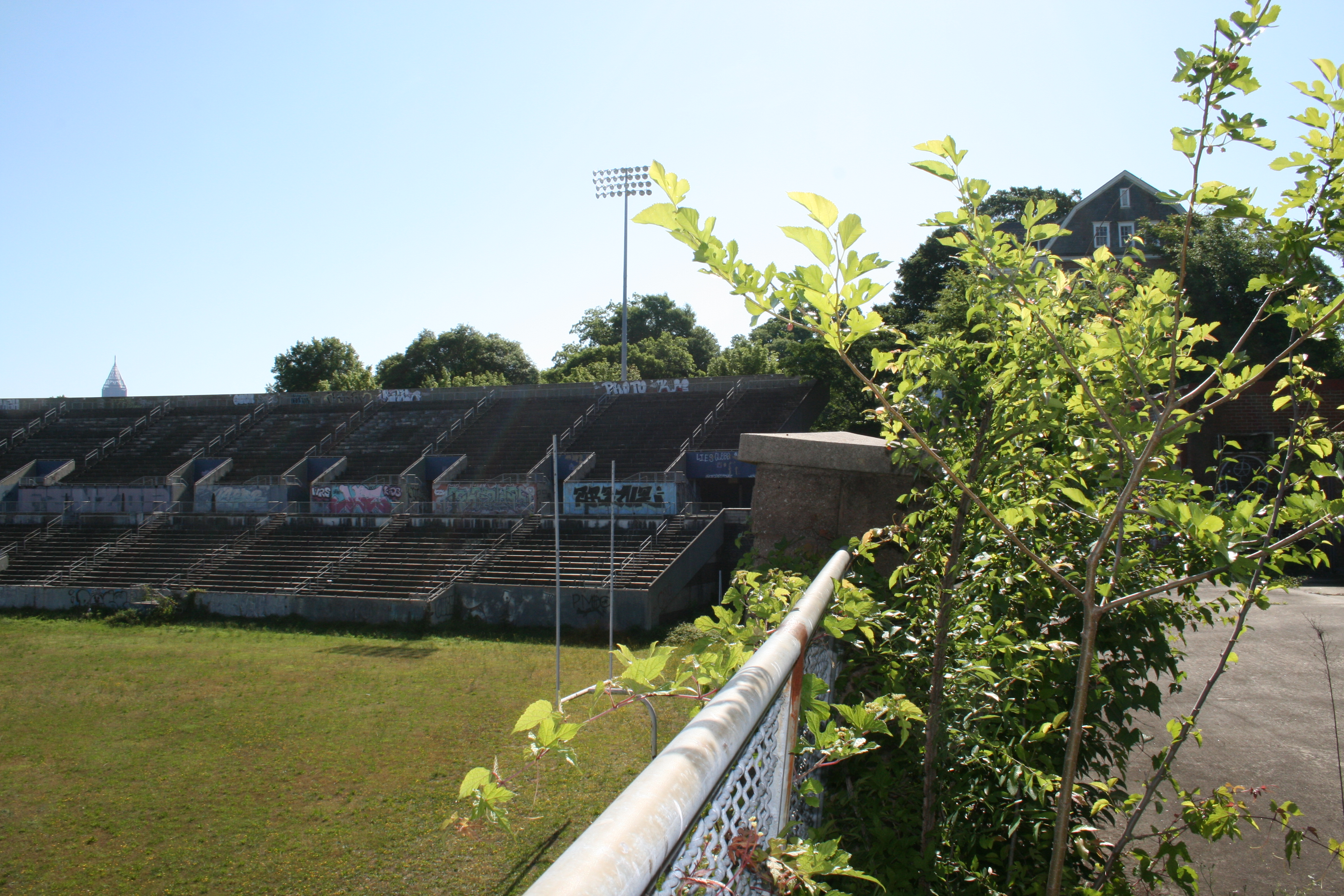
Stadiums are more than just concrete and steel; they are living, breathing monuments to history, where triumphs and heartbreaks unfold before roaring crowds. Each of the abandoned stadiums on this list once held thousands, if not hundreds of thousands, of passionate fans, their voices echoing through the stands in moments of pure elation or crushing defeat. But time, economic shifts, and changing priorities have left these once-grand arenas in eerie silence. Despite their decay, these stadiums remain deeply ingrained in the cultural fabric of their cities. For urban explorers, historians, and sports fans alike, these abandoned stadiums tell stories of glory and neglect, of passionate crowds now replaced by rust and weeds. They remind us that no venue, no matter how iconic, is immune to the forces of change. Perhaps some of these stadiums will find new life in the years to come—but for now, they remain frozen in time, their empty seats still waiting for a crowd that will never return.

